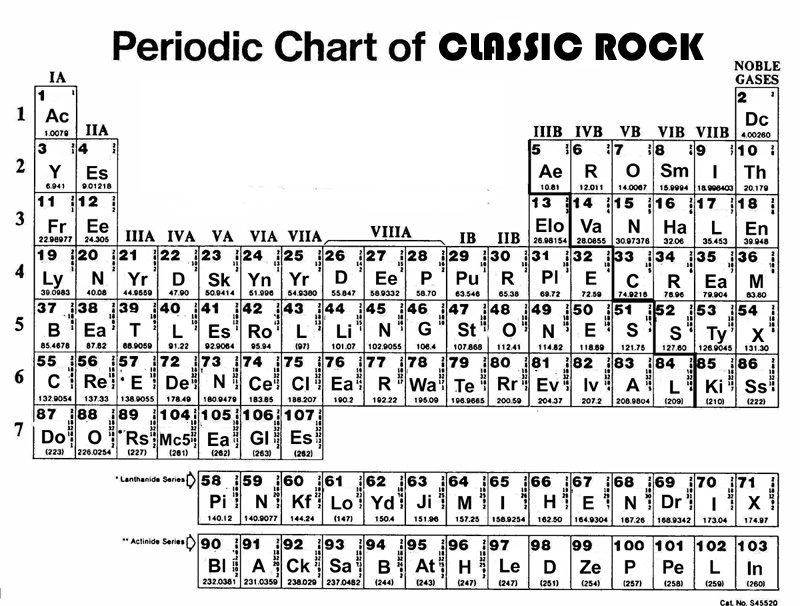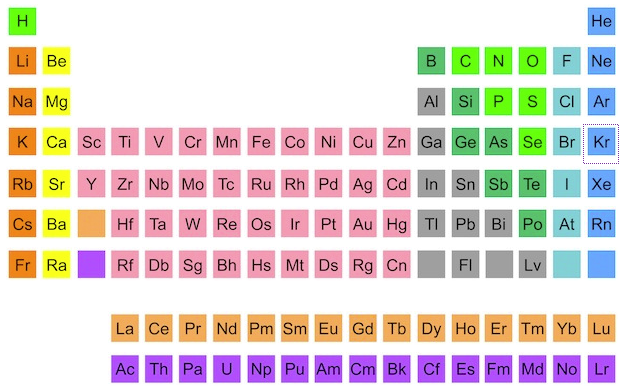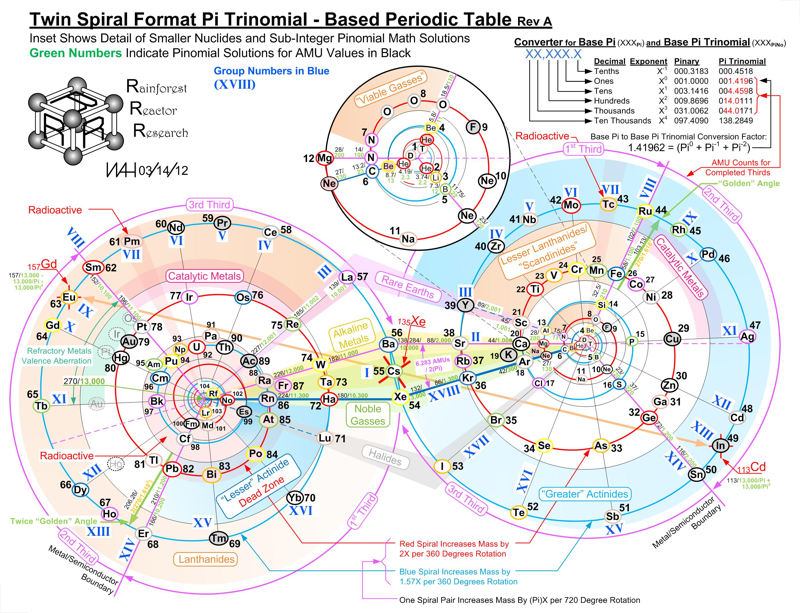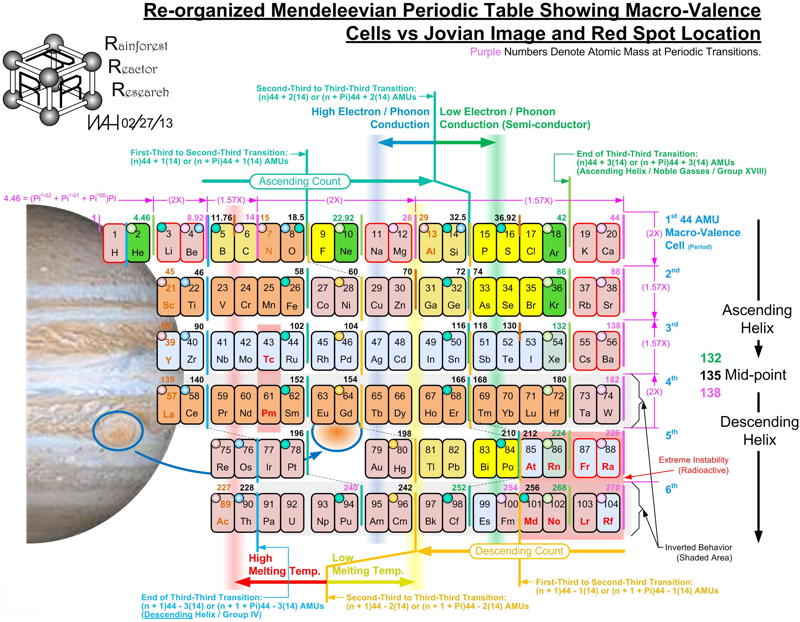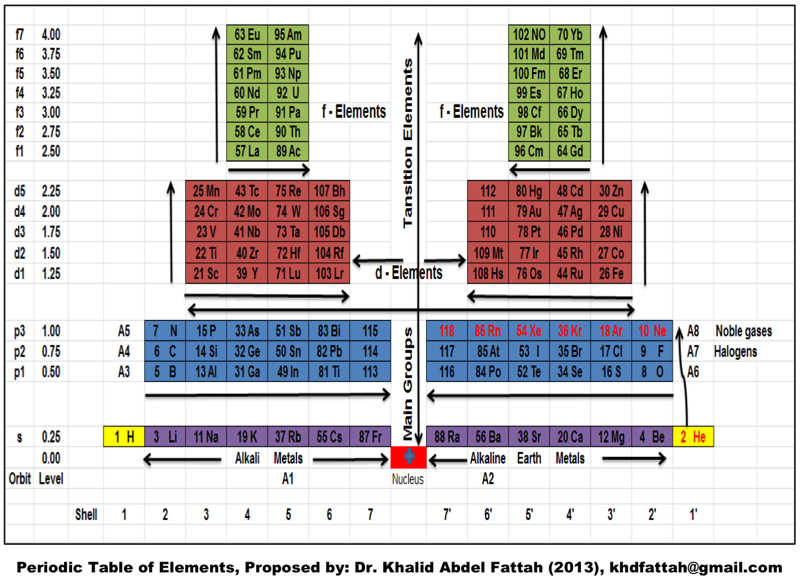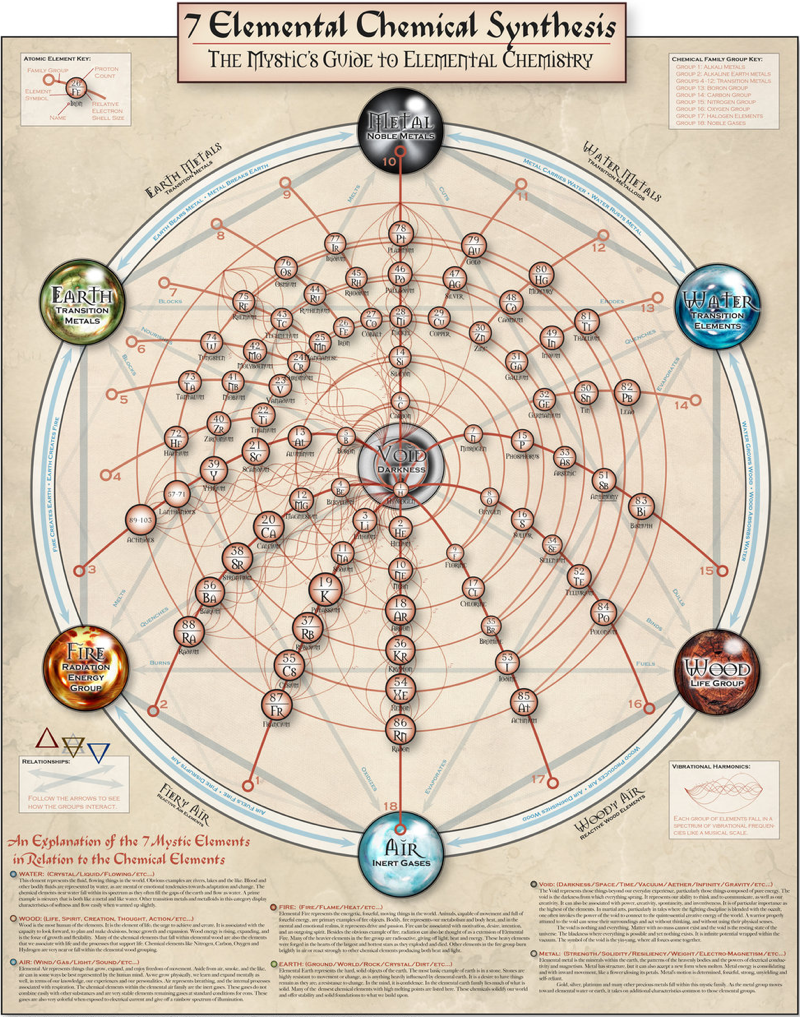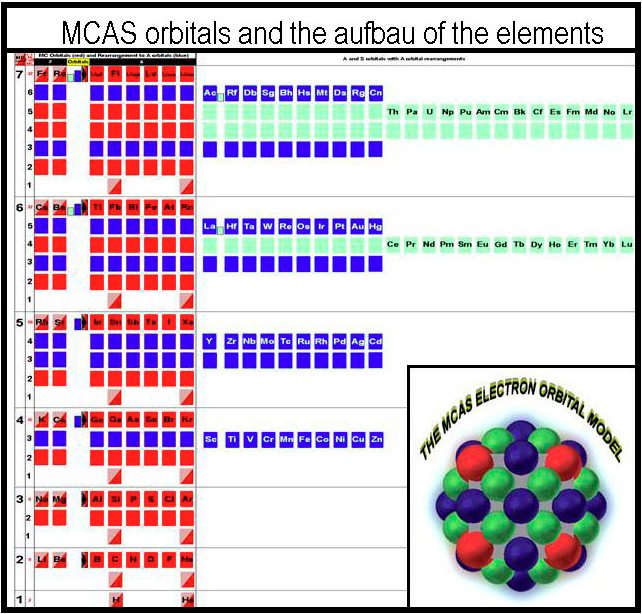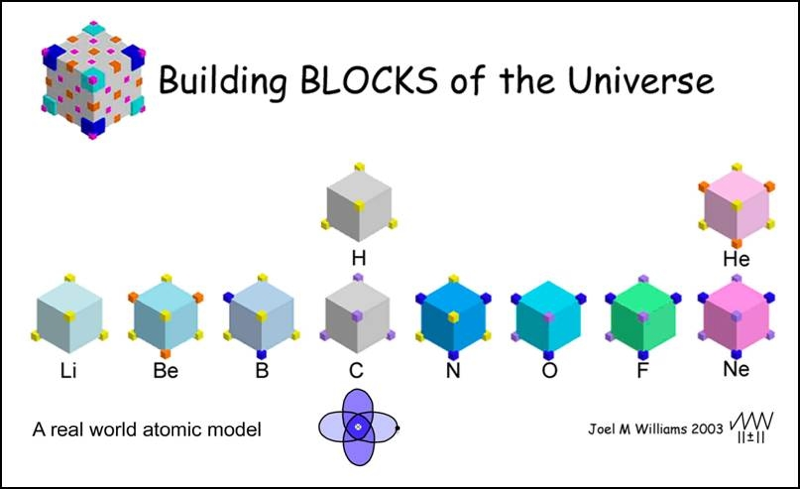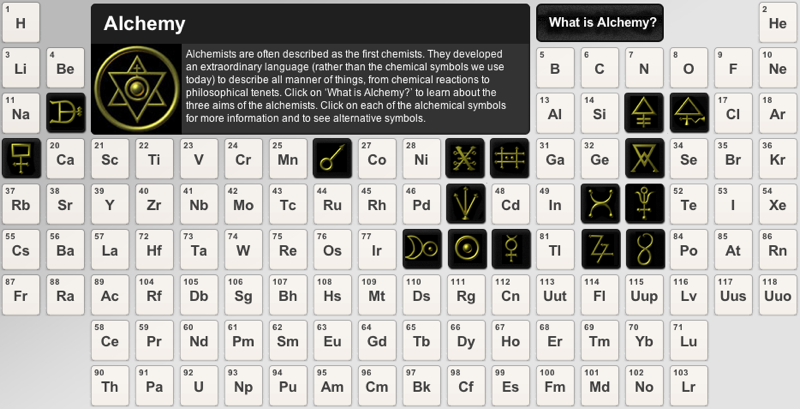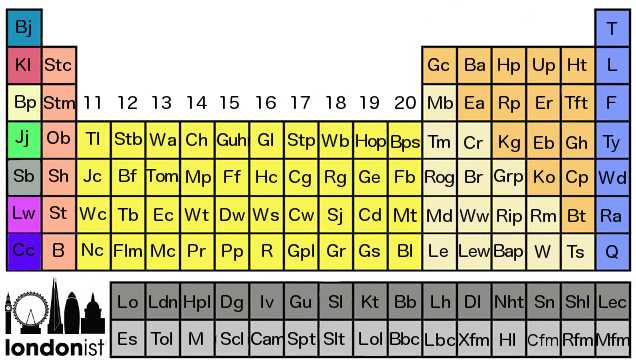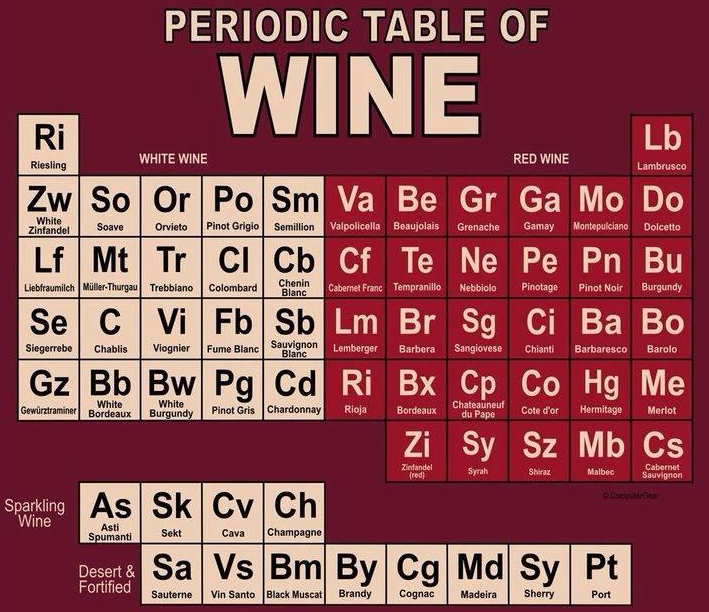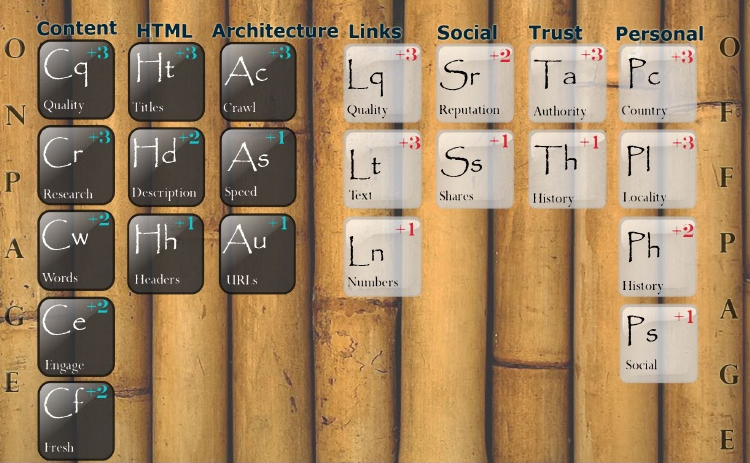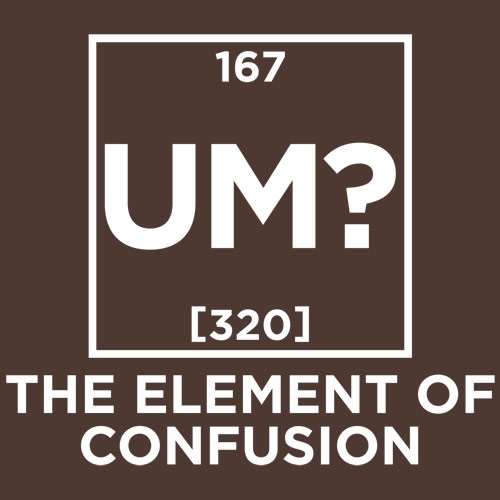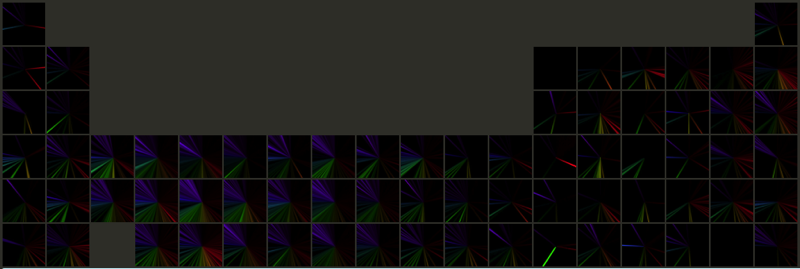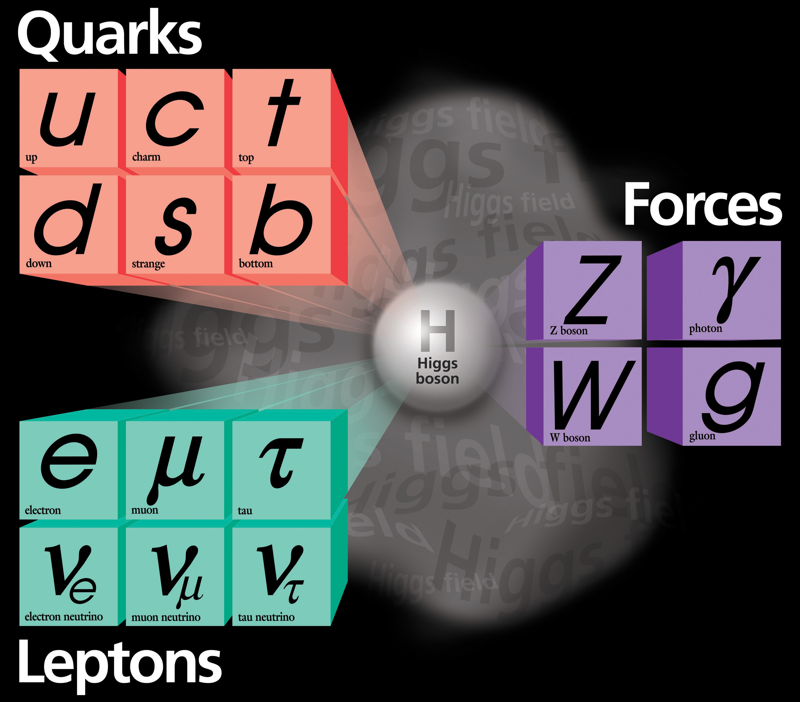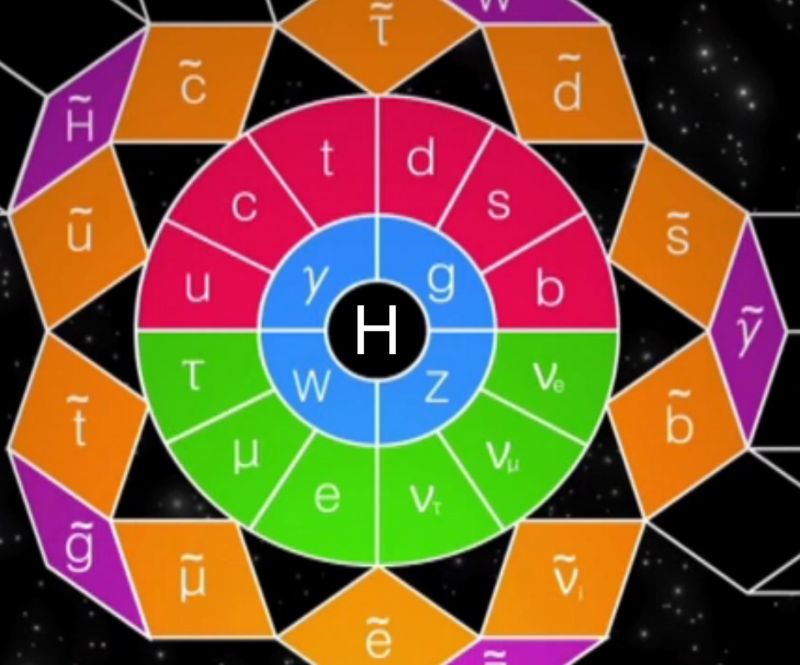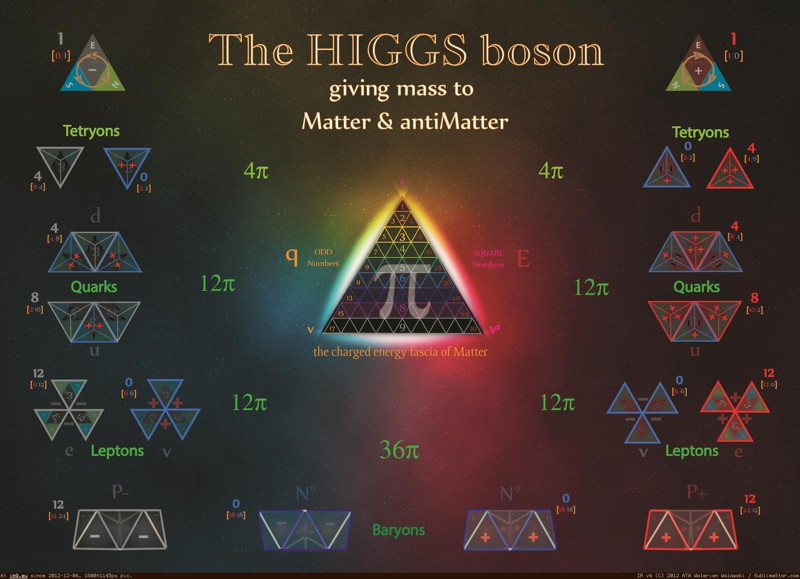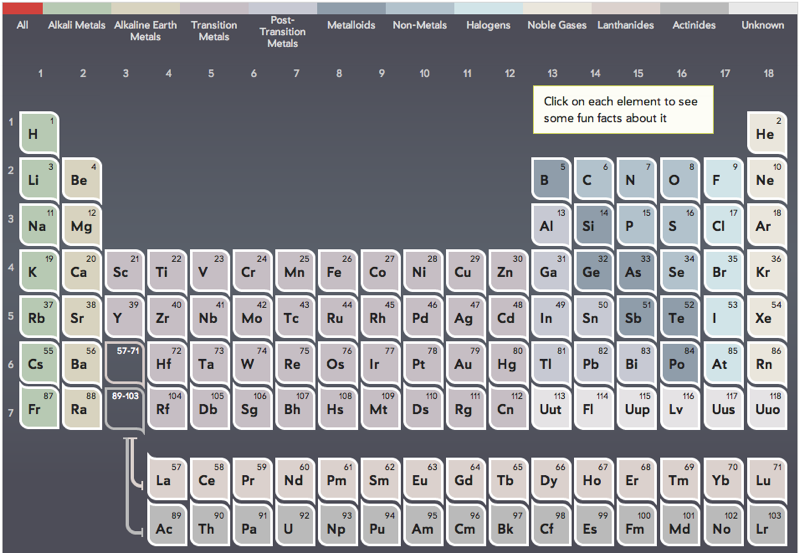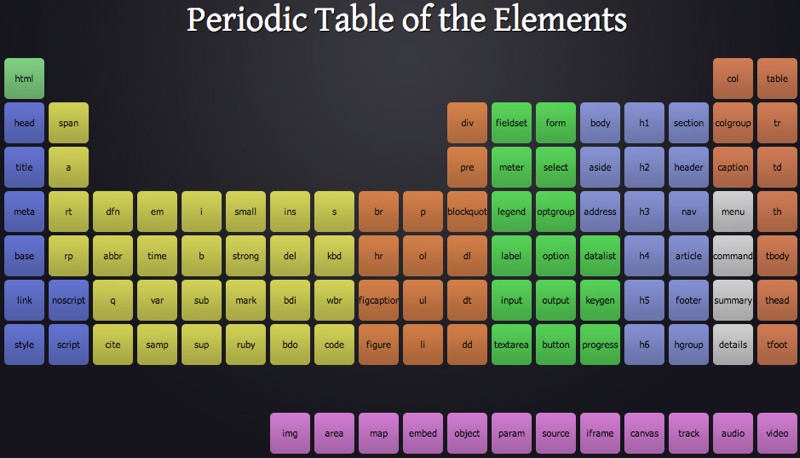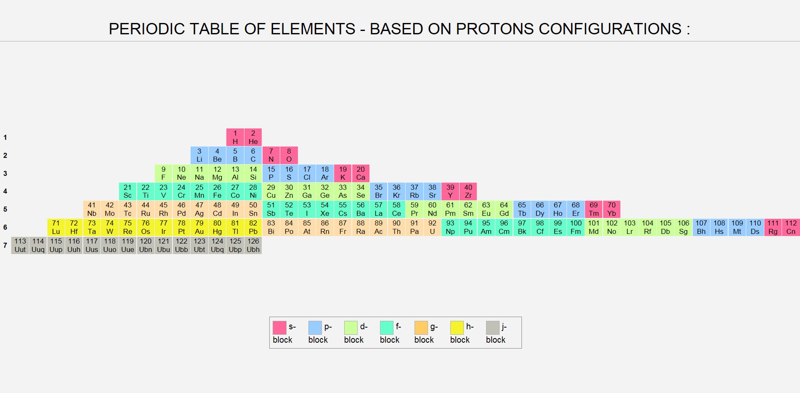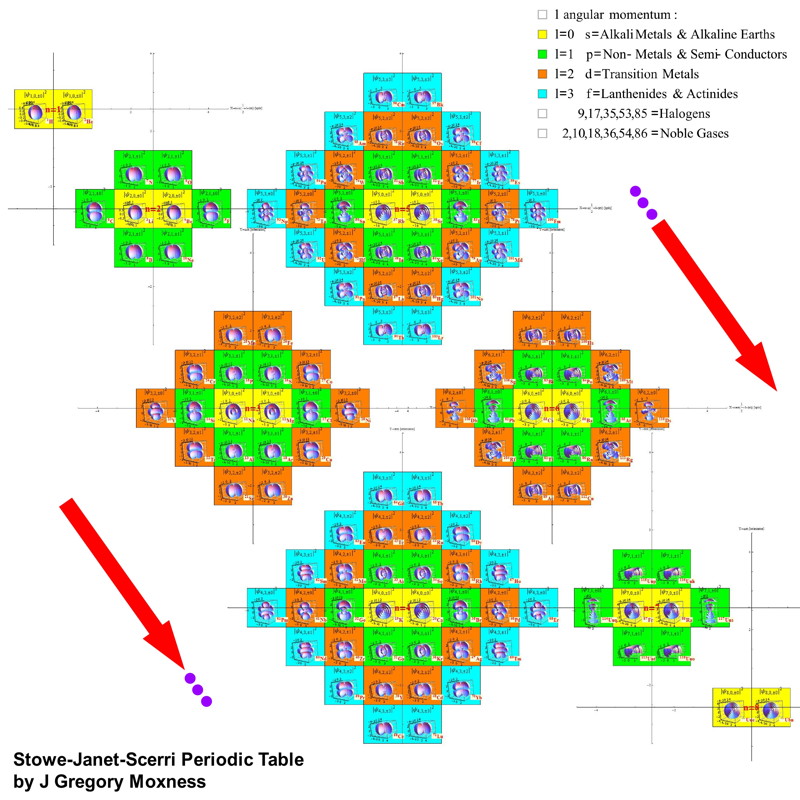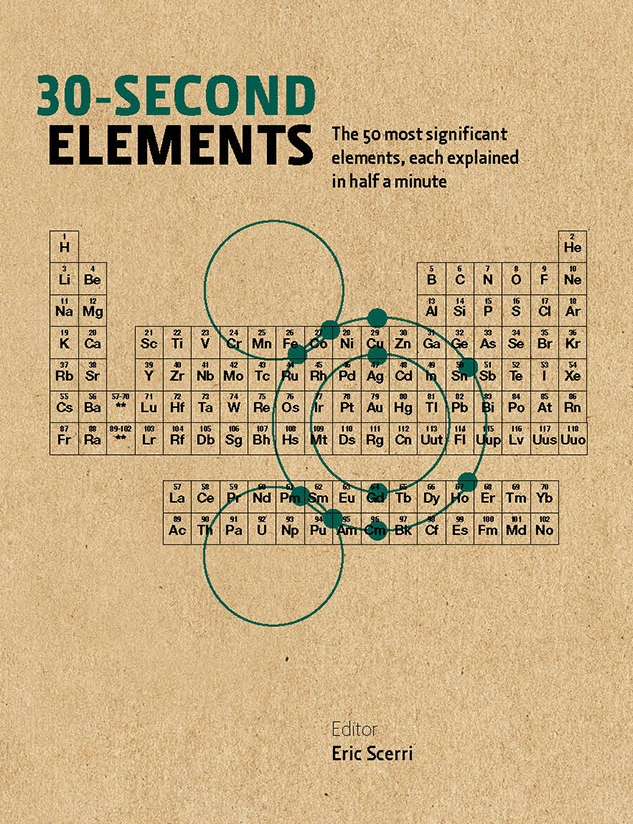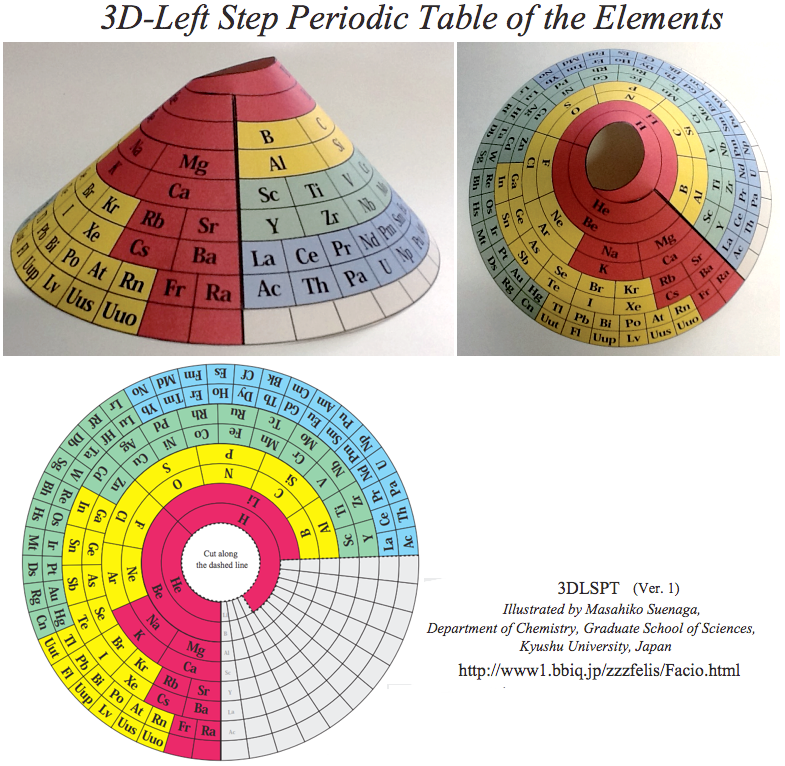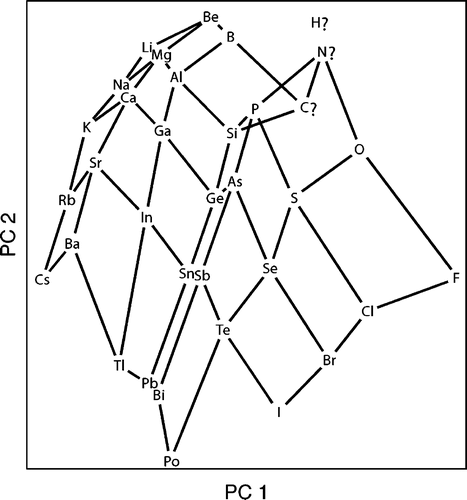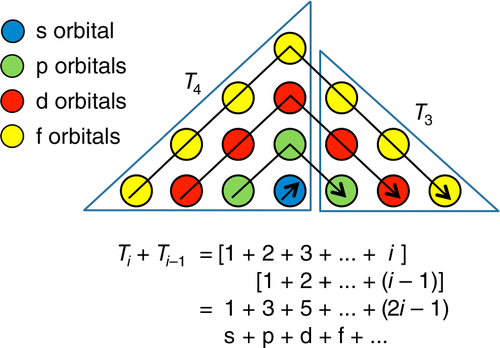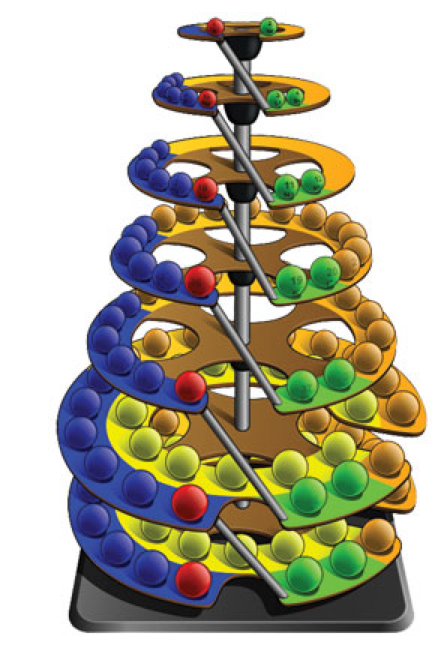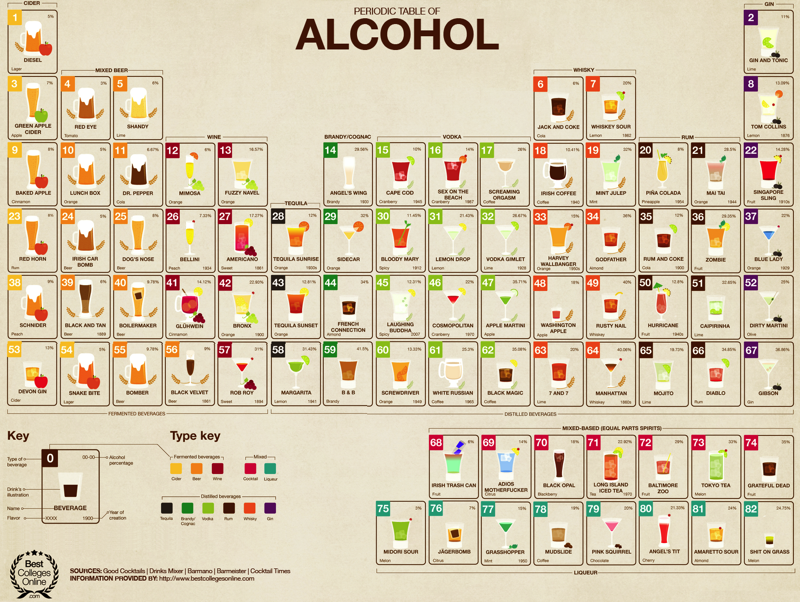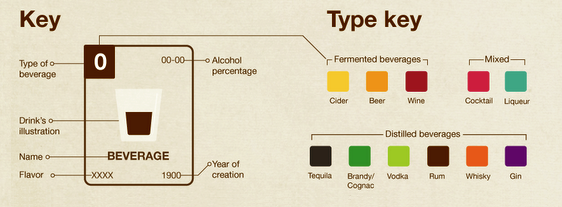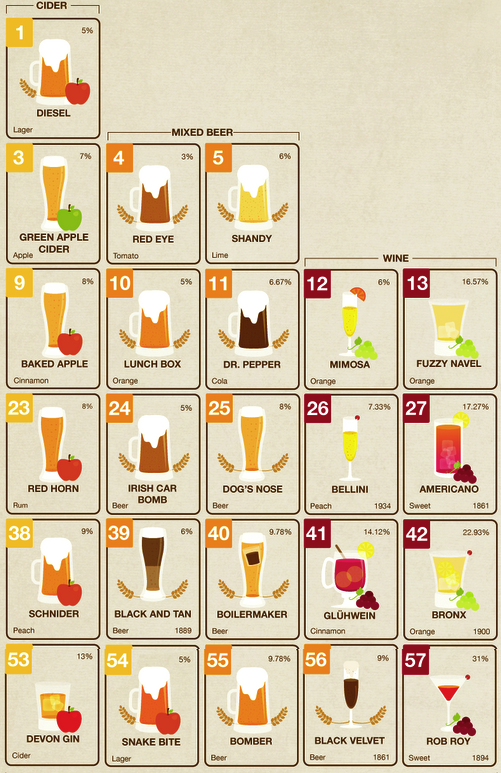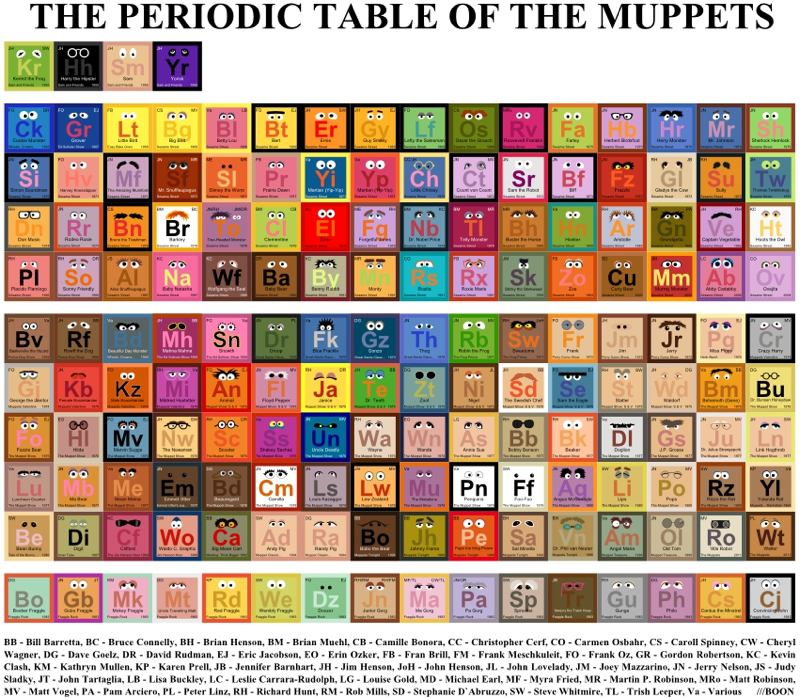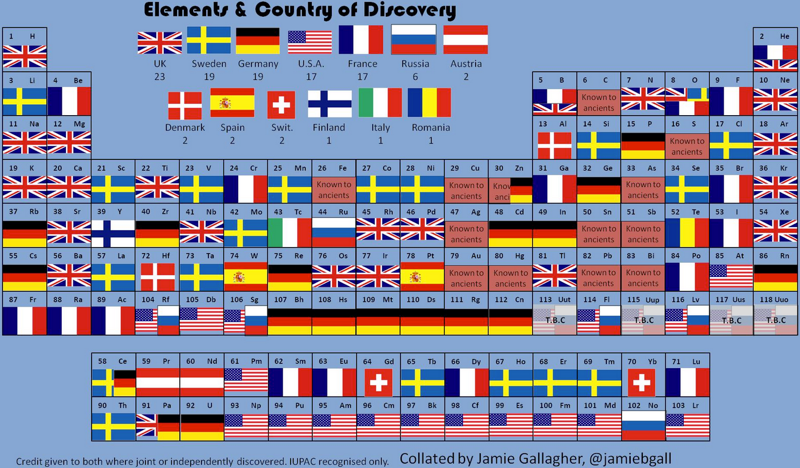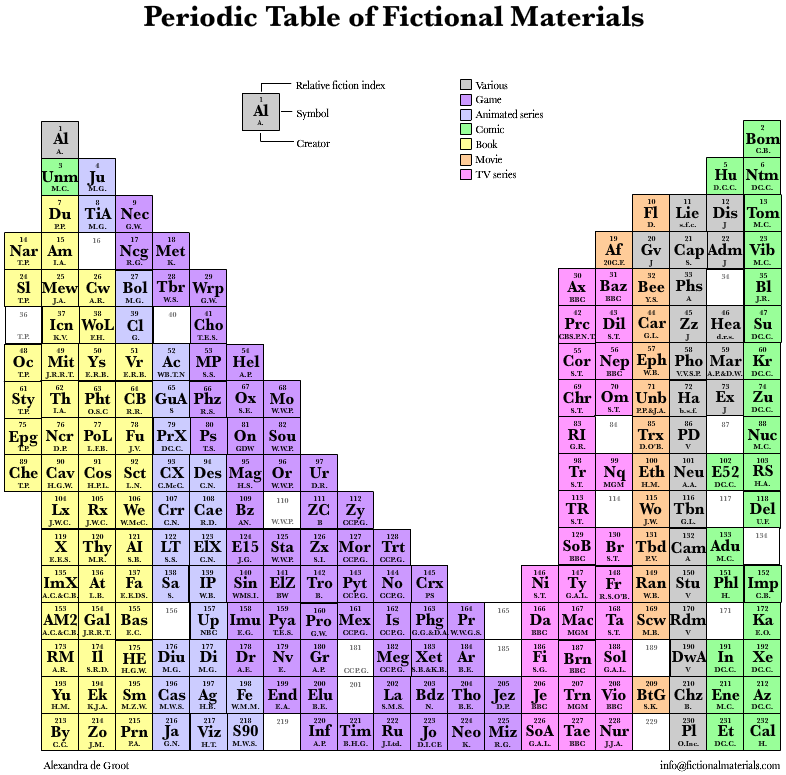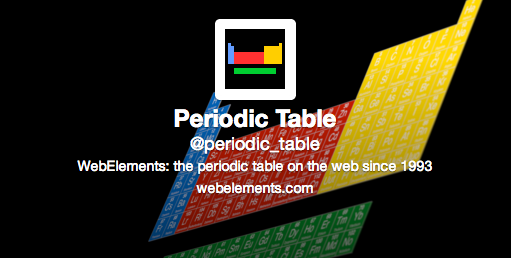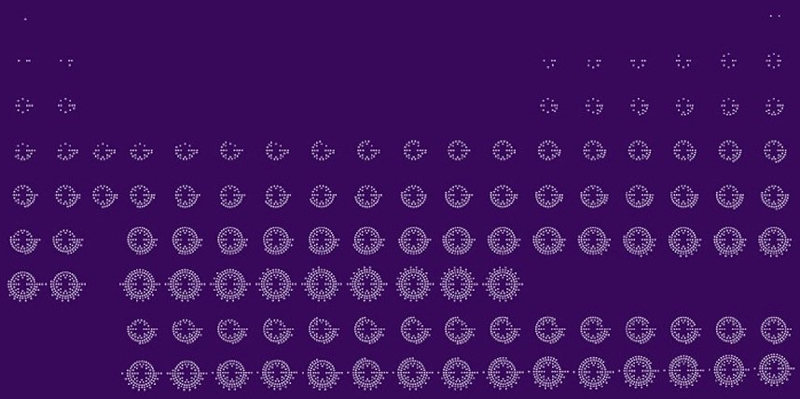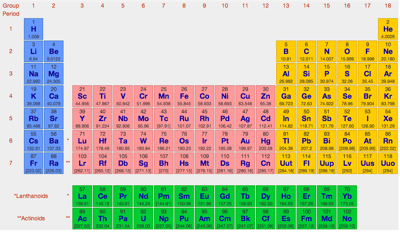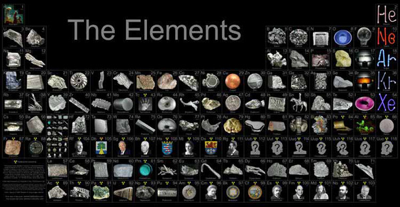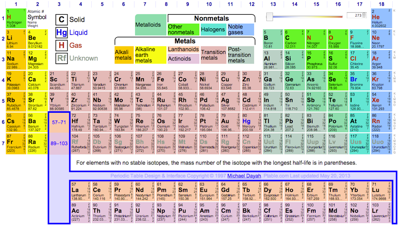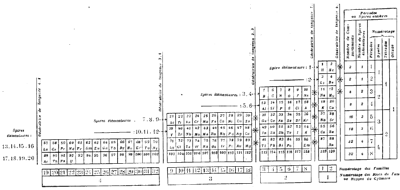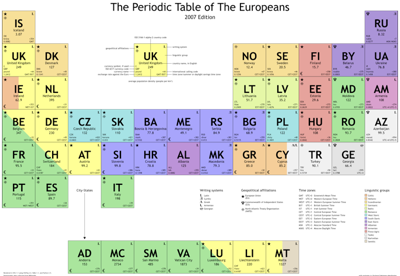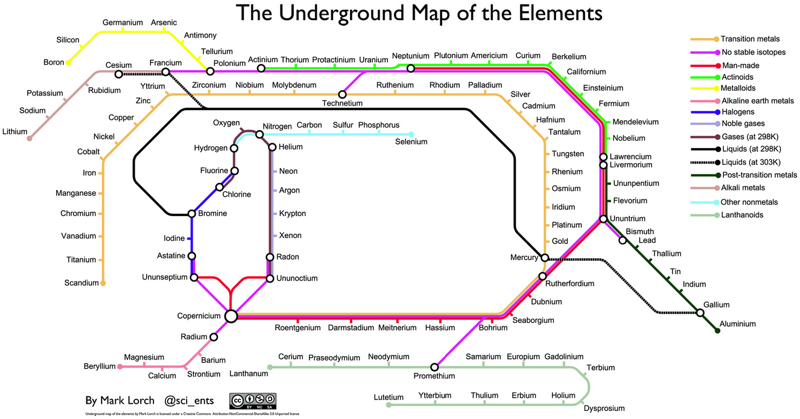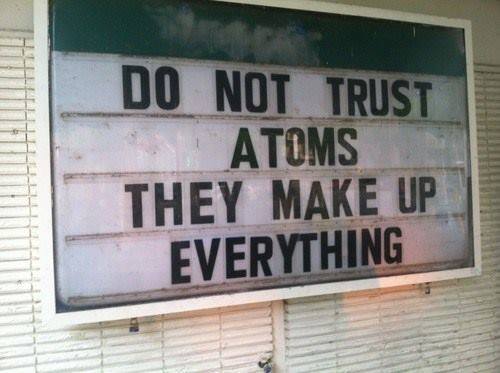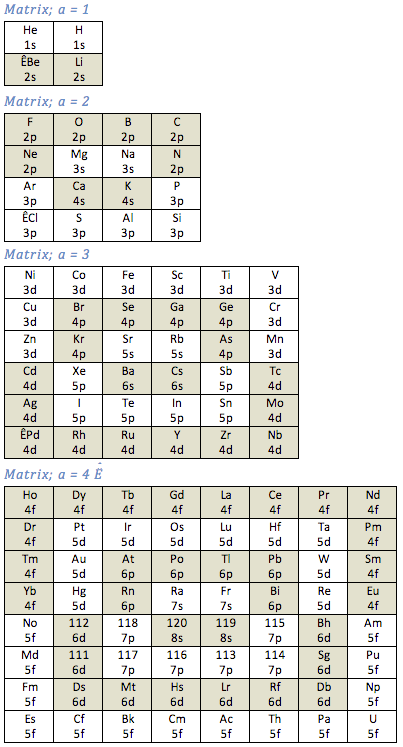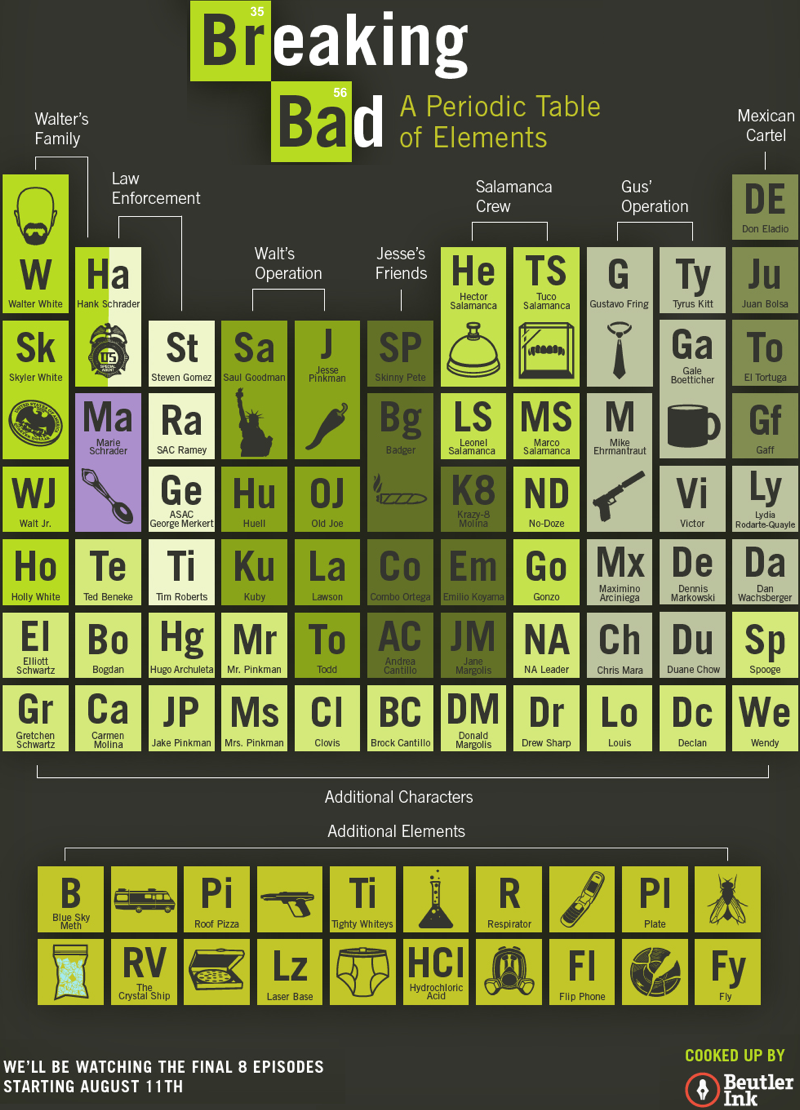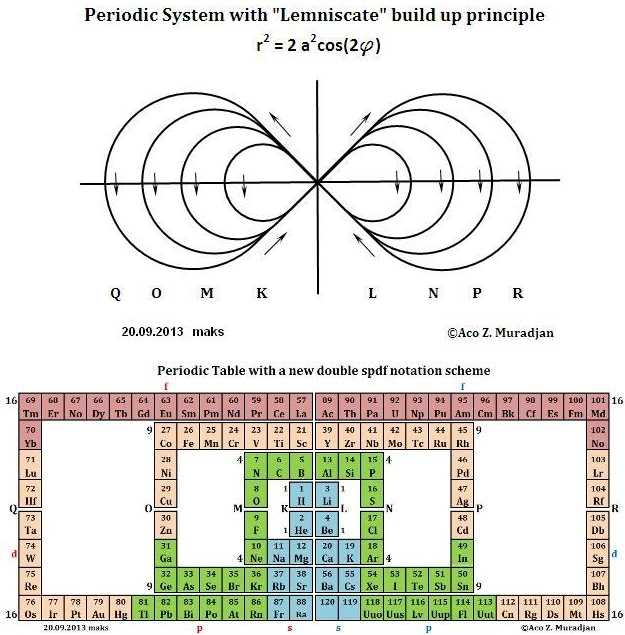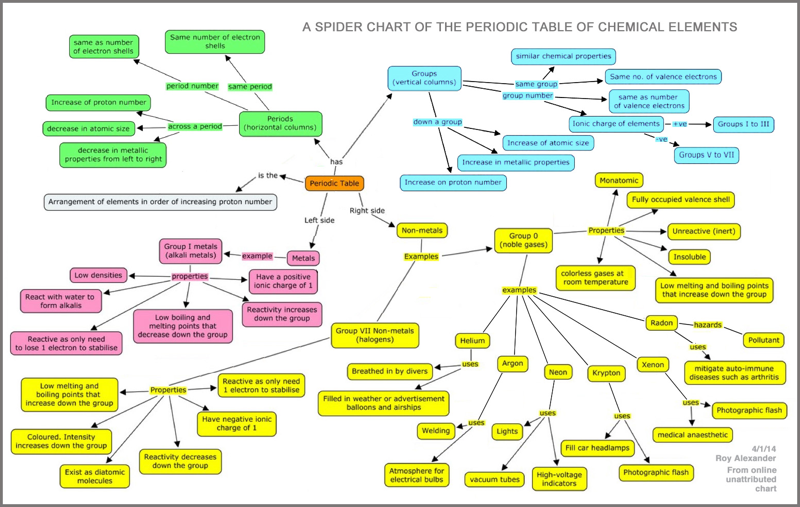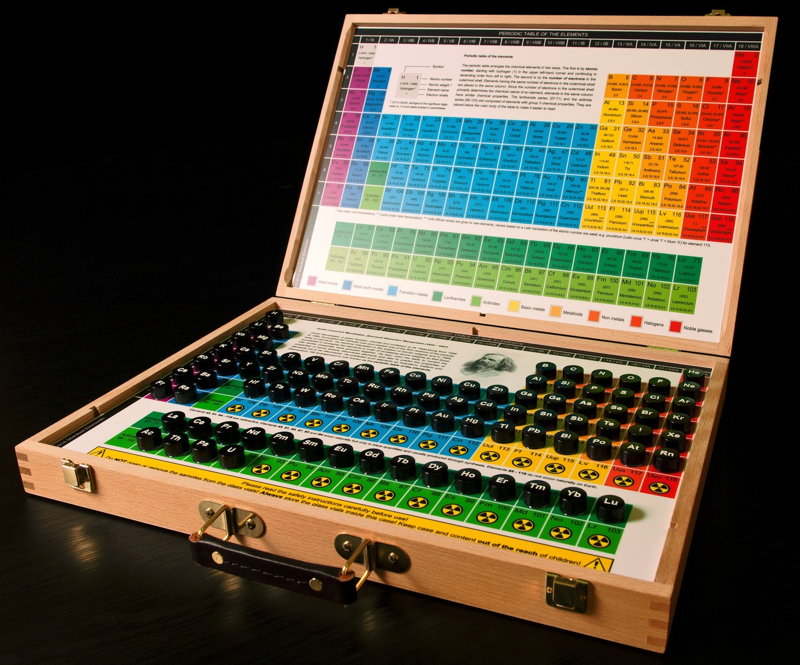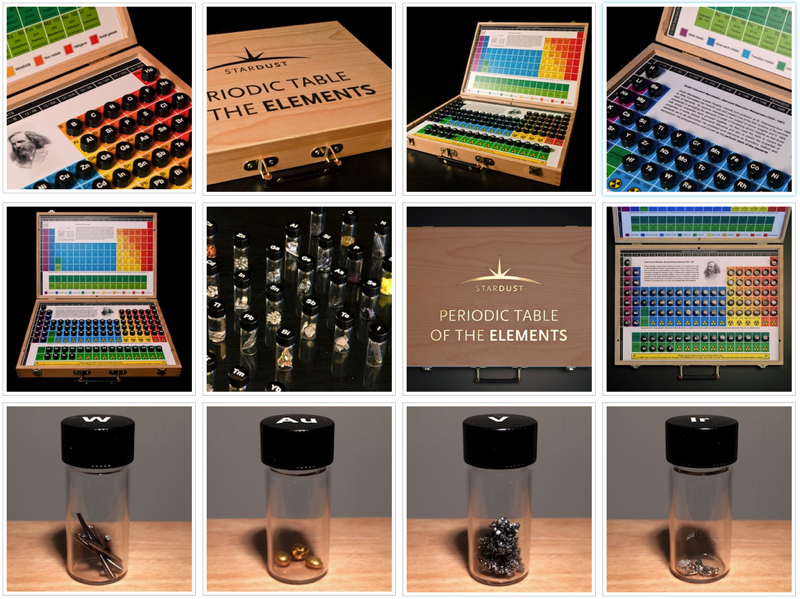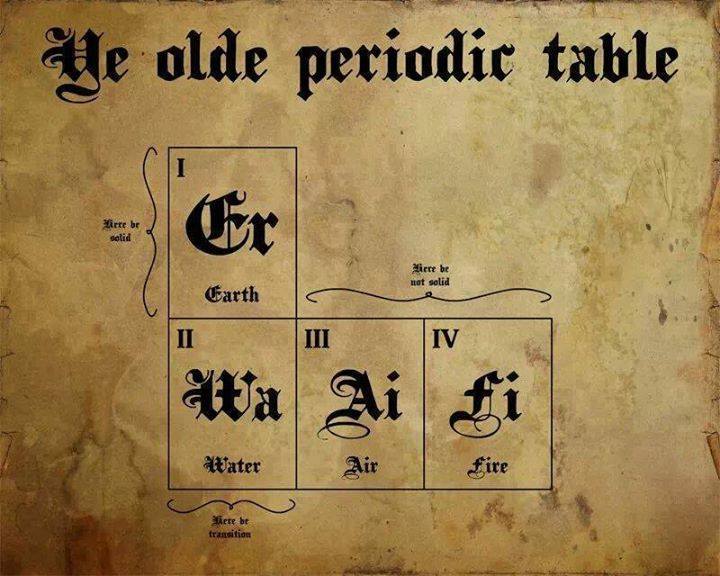Periodic Table |
 |
 |
 |
 |
 |
 |
 |
| What is the Periodic Table Showing? | Periodicity |
The INTERNET Database of Periodic Tables
There are thousands of periodic tables in web space, but this is the only comprehensive database of periodic tables & periodic system formulations. If you know of an interesting periodic table that is missing, please contact the database curator: Mark R. Leach Ph.D.
Use the drop menus below to search & select from the more than 1300 Period Tables in the database:
- SEARCH:
- By Decade
- By Type
-
Pre-Selected
Best Four Periodic Tables for Data All Periodic Tables by Name All Periodic Tables by Date All Periodic Tables by Reverse Date All Periodic Tables, as Added to the Database All Periodic Tables, reverse as Added Elements by Name Elements by Date Discovered Search for: Mendeleev/Mendeléeff Search for: Janet/Left-Step Search for: Eric Scerri Search for: Mark Leach Search for: René Vernon Search for: Electronegativity
-
By Year
2025 2024 2023 2022 2021 2020 2019 2018 2017 2016 2015 2014 2013 2012 2011 2010 2009 2008 2007 2006 2005 2004 2003 2002 2001 2000 1999 1998 1997 1996 1995 1994 1993 1992 1991 1990 1989 1988 1987 1986 1985 1984 1983 1982 1981 1980 1979 1978 1977 1976 1975 1974 1973 1972 1971 1970 1969 1968 1967 1966 1965 1964 1963 1962 1961 1960 1959 1958 1957 1956 1955 1954 1953 1952 1951 1950 1949 1948 1947 1946 1945 1944 1943 1942 1941 1940 1939 1938 1937 1936 1935 1934 1933 1932 1931 1930 1929 1928 1927 1926 1925 1924 1923 1922 1921 1920 1919 1918 1917 1916 1915 1914 1913 1912 1911 1910 1909 1908 1907 1906 1905 1904 1903 1902 1901 1900 1899 1898 1897 1896 1895 1894 1893 1892 1891 1890 1889 1888 1887 1886 1885 1884 1883 1882 1881 1880 1879 1878 1877 1876 1875 1874 1873 1872 1871 1870 1869 1868 1867 1866 1865 1864 1863 1862 1861 1860 1859 1858 1857 1856 1855 1854 1853 1852 1851 1850 1844 1843 1842 1838 1836 1831 1830 1829 1825 1824 1817 1814 1813 1811 1808 1807 1804 1803 1802 1801 1800 1798 1794 1791 1789 1787 1783 1782 1781 1778 1775 1774 1772 1771 1766 1753 1751 1748 1735 1718 1700 1690 1687 1682 1671 1669 1624 1617 1520 1000 -300 -450 -800 -1000 -2000 -3500 -3750 -5000 -6000 -7000 -9000
Periodic Tables from the year 2013:
| Year: 2013 | PT id = 539, Type = non-chem |
Classic Rock Periodic Chart
A Periodic Chart of Classic Rock by Van Dieman... look more closely:
Thanks to Eric Scerri for the tip!
See the website EricScerri.com and Eric's Twitter Feed.
| Year: 2013 | PT id = 557, Type = non-chem misc |
Twitter Handle Periodic Table
From Stuart Cantrill of Chemical Connections:
So, you're a chemist and you've finally decided to find out what all the fuss is about with this thing called Twitter. You decide to sign up, but, for whatever reason, you don't fancy using your own name. Maybe an element; that would be cool wouldn't it?
You are a chemist after all. Maybe you work with Grubbs' catalyst a lot, and you like the idea of being @ruthenium. Or perhaps Stille/Suzuki/Heck couplings are your thing and so @palladium seems appropriate.
Not into metals? Well why not @fluorine, @helium or @bromine?
Well, I'm sorry to report that all of those are taken, but there are 114 named elements (we're ignoring those ununelementium placeholder names) to choose from. Surely some of the more exotic elements must be there for the taking?
Well, no. Gone. All of 'em.
Thought you'd sneak in and claim one of the two newest additions to the periodic table @flerovium or @livermorium? Sorry, you've been beaten.
Here is the periodic table of Twitter, with all the accounts linked:
| Year: 2013 | PT id = 560, Type = formulation |
Twin Spiral Pi Trinomial - Based Periodic Table
A Twin Spiral Pi Trinomial - Based Periodic Table by Bill Harrington, Founder/CTO of Rainforest Reactor Research and Temporal Dynamics Laboratory. For full size, click the image:
| Year: 2013 | PT id = 561, Type = formulation |
Macro-Valence Cells vs Jovian Image and Red Spot Location Periodic Table
A Macro-Valence Cells vs Jovian Image and Red Spot Location Periodic Table by Bill Harrington, Founder/CTO of Rainforest Reactor Research and Temporal Dynamics Laboratory. For full size, click the image:
| Year: 2013 | PT id = 562, Type = formulation |
Fattah's Periodic Table
A new vertical periodic table by Dr. Khalid A. FATTAH, Faculty of Eng., Karary University, Khartoum, Sudan. For full size, click the image:
| Year: 2013 | PT id = 564, Type = formulation non-chem |
7 Elemental Chemical Synthesis
The Mystics Guide to Elemental Chemistry, by bzylman at deviantart:
[A] poster is designed to geek out the chemist and the mystic alike. It is a variation on the periodic table of chemical elements that have been rearranged into a circular structure based upon their proton count and chemical family, augmented with the concept of the 7 mystic elements of earth, air, fire, water, metal, wood and void. It was very interesting to work upon once I hit the correct organization of elements that they lined up almost perfectly.
| Year: 2013 | PT id = 566, Type = formulation data review |
Electronegativity Chart (Leach)
From Mark R Leach's paper, Concerning electronegativity as a basic elemental property and why the periodic table is usually represented in its medium form, Journal & PDF.
Due to the importance of Pauling's electronegativity scale, as published in The Nature of The Chemical Bond (1960), where electronegativity ranges from Cs 0.7 to F 4.0, all the other electronegativity scales are routinely normalised with respect to Pauling's range.
When the Pauling, Revised Pauling, Mulliken, Sanderson and Allred-Rochow electronegativity scales are plotted together against atomic number, Z, the similarity of the data can be observed. The solid line shows the averaged data:
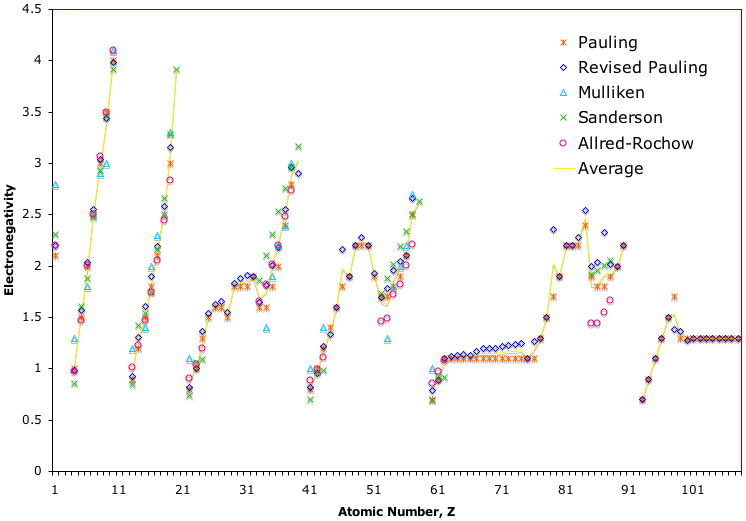
| Year: 2013 | PT id = 567, Type = formulation |
MCAS Electron Orbital Filling
From Joel M Williams:
"While the periodic table arrangement is usefully interpreted in columns of similar behavior, it is erroneous to imply that the underlying orbitals are all the same for all the elements in the columns of a block. Sub-orbital information has been excluded! From the standpoint of chemistry, the rule of eight would have provided better imagery on which to build an orbital system than was Bohr's orb turned-sphere. A sphere is useless from a chemical standpoint. Hybridization should not have to occur to explain the simplest of molecules. Simplicity would have the electrons occupying orbital spaces that are similar in shape. Only three orbital types are actually needed to describe the electron packing of the elements. Octahedral, square-planar, and pyramidal coordination complexes of the transition elements follow logically without the need to hybridize. This brief paper describes a rational packing of electrons around a nucleus that ends up mimicking the familiar periodic table when compressed to similar behavior."
Modeling the MCAS Way describes this concept of "building blocks" and can be found here.
| Year: 2013 | PT id = 568, Type = data misc |
RSC Visual Elements Periodic Table: Alchemy
From the RSC Website: "Alchemists are often described as the first chemists. They developed an extraordinary language (rather than the chemical symbols we use today) to describe all manner of things, from chemical reactions to philosophical tenets. Click on ‘What is Alchemy?’ to learn about the three aims of the alchemists. Click on each of the alchemical symbols for more information and to see alternative symbols."
| Year: 2013 | PT id = 570, Type = non-chem |
London, Periodic Table of
Like the Tube Map, the Periodic Table is an endlessly fascinating thing. Over the years, the format has been adapted to all kinds of schemes. A few years ago, we tried to make sense of London in this way, by arranging important facets of the capital into rows and columns. It's been a while, so we've now updated it, with a few changed entries and a general tidy up. Can you work out the identity of each London 'element'? Can you spot hidden patterns and trends? Can you suggest improvements?
Thanks to Eric Scerri for the tip!
See the website EricScerri.com and Eric's Twitter Feed.
| Year: 2013 | PT id = 571, Type = non-chem |
Wine, Periodic Table of
A Periodic Table of Wine by ComputerGear:
| Year: 2013 | PT id = 572, Type = non-chem |
Google Panda: Periodic Table of SEO
Panda is a is a 2011 change to Google's search results ranking algorithm aimed to lower the rank of 'low-quality sites' or 'thin sites' and return higher-quality sites near the top of the search results.
The PT below, from spotaleopard.com, is a graphic to help web developers make their sites 'Panda friendly':
| Year: 2013 | PT id = 574, Type = non-chem |
Flag of Nation of Discoverer Periodic Table
A periodic table showing the national flag of the discoverer:
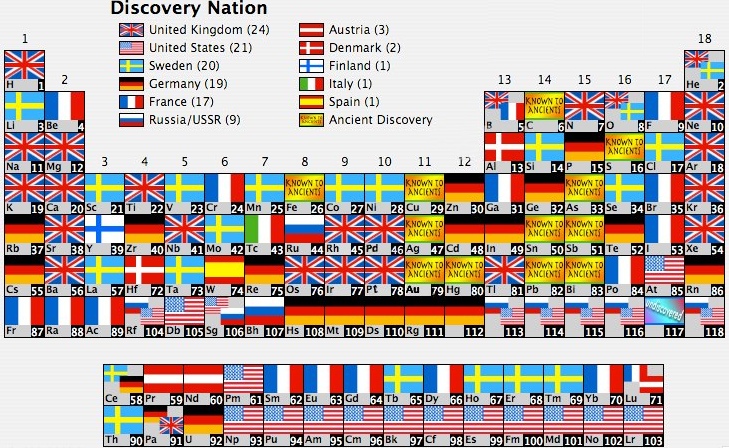
| Year: 2013 | PT id = 575, Type = non-chem |
He(isenberg) T-Shirt
From Bad Idea T-Shirts:
| Year: 2013 | PT id = 576, Type = non-chem |
Element of Confusion T-Shirt
From Bad Idea T-Shirts:
| Year: 2013 | PT id = 577, Type = misc |
Spectraphonic Periodic Table
Relax and enjoy the Spectraphonic Periodic Table of the Elements, the first and only periodic table where you may hear the characteristic light signature (spectra) of each element dropped forty octaves into the auditory range. Hear the sounds of the atoms. Experience the building blocks of reality... of the Universe... of You.:
| Year: 2013 | PT id = 580, Type = formulation non-chem misc |
Higgs Boson and Fundamental Particle/Force Periodic Tables
The Higgs boson sits at the heart of the Standard Model of particle physics, and so is at the centre of periodic table type representations of quarks, leptons and forces.
Three representations by the UCR Today, a video interview with Particle Fever editor Walter Murch: "The Higgs boson is kind of a MacGuffin" and from im9.eu:
| Year: 2013 | PT id = 583, Type = data |
Scientific American Interactive Periodic Table
From Scientific American, The Elements Revealed: An Interactive Periodic Table.
Many elements have links with articles on individual elements which first appeared in Nature Chemistry and were not previously available on-line:
Thanks to Eric Scerri for the tip!
See the website EricScerri.com and Eric's Twitter Feed.
| Year: 2013 | PT id = 584, Type = formulation |
Fattah's Extended Periodic Table
A new vertical periodic table (Extended) by Dr. Khalid A. FATTAH, Faculty of Eng., Karary University, Khartoum, Sudan:
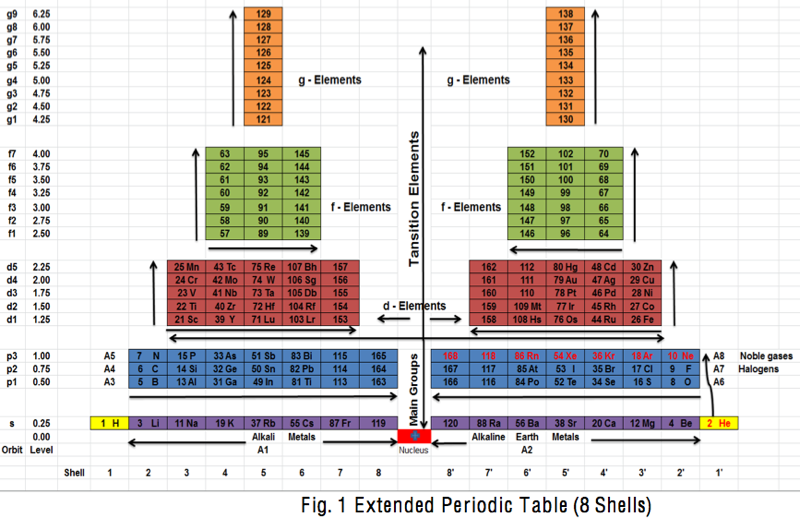
| Year: 2013 | PT id = 587, Type = non-chem |
HTML Periodic Table of the Elements
Periodic Table of HTML Elements, by Josh Duck, has an inspector that allows you to see which elements are being used on any website you enter:
| Year: 2013 | PT id = 588, Type = formulation |
Proton Configuration Periodic Table
A Periodic Table of Proton Configurations by Radoslav Rasko Jovanovic:
| Year: 2013 | PT id = 589, Type = formulation 3D |
4D Stowe-Janet-Scerri Periodic Table
By Jgmoxness who writes:
"I've replaced the standard periodic table in the 7th "Chemistry Pane" of my E8 visualizer with a 2D/3D/4D Stowe-Janet-Scerri version of the Periodic Table.
"Interestingly, it has 120 elements, which is the number of vertices in the 600 Cell or the positive half of the 240 E8 roots. It is integrated into VisibLie_E8 so clicking on an element adds that particular atomic number's E8 group vertex number to the 3rd E8 visualizer pane.
"The code is a revision and extension of Enrique Zeleny's Wolfram Demonstration":
| Year: 2013 | PT id = 590, Type = formulation non-chem misc |
Shapes Periodic Table
By ScienceIsGolden.com comes the Periodic Table of Shapes. The site is worth clicking around, as there is a lot of good PT stuff to find:
| Year: 2013 | PT id = 591, Type = review |
30 Second Elements
30 Second Elements The 50 most significant elements, each explained in half a minute. A book Edited by Eric Scerri and published by Ivy Press.
"30 Second Elements presents you with the foundations of chemical knowledge, distilling the 50 most significant chemical elements into half-a-minute individual entries, using nothing more than two pages, 300 words and one picture. Divided into seven chapters, it includes the atomic details of the other 68 elements and the relationships of all 118, as well as biographies of the chemists who transformed scientific knowledge and unlocked the mysteries of life itself. Illustrated with explosive graphics, here is the quickest way to know your arsenic from your europium".
The curator of this website is a contributor:
| Year: 2013 | PT id = 592, Type = formulation 3D spiral |
3D Left Step Periodic Table
By Masahiko Suenaga, Kyushu University, Japan a 3D Left Step Periodic Table.
"Inspired by the work of Dr. Tsimmerman and Dr. Samanez, I have created a new 3D Left Step Periodic Table, which resembles to Mt. Fuji, recently registered as a World Heritage site. For more information, please visit my website":
| Year: 2013 | PT id = 596, Type = formulation review |
From Periodic Properties to a Periodic Table Arrangement
A paper in J.Chem. Ed.: From Periodic Properties to a Periodic Table Arrangement
Emili Besalú, Departament de Química i Institut de Química Computacíonal i Catàlisis, Universitat de Girona, C/Maria Aurèlia Capmany, 69, 17071 Girona, Catalonia, Spain.
J. Chem. Educ., 2013, 90 (8), pp 1009-1013 DOI: 10.1021/ed3004534 Publication Date (Web)
"A periodic table is constructed from the consideration of periodic properties and the application of the principal components analysis technique. This procedure is useful for objects classification and data reduction and has been used in the field of chemistry for many applications, such as lanthanides, molecules, or conformers classification. From the information given, the whole procedure can be reproduced by any interested reader having a basic background in statistics and with the help of the supplementary material provided. Intermediate calculations are instructive because they quantify several concepts the students know only at a qualitative level. The final scores representation reveals an unexpected periodic table presenting some interesting features and points for discussion."
| Year: 2013 | PT id = 597, Type = formulation |
Periodic Pyramid
A Periodic Pyramid by Jennifer N. Hennigan and W. Tandy Grubbs * Department of Chemistry, Stetson University, DeLand, Florida 32723, United States
J. Chem. Educ., 2013, 90 (8), pp 1003-1008 DOI: 10.1021/ed3007567 Publication Date (Web): June 21, 2013
The chemical elements present in the modern periodic table are arranged in terms of atomic numbers and chemical periodicity. Periodicity arises from quantum mechanical limitations on how many electrons can occupy various shells and subshells of an atom. The shell model of the atom predicts that a maximum of 2, 8, 18, and 32 electrons can occupy the shells identified by the principle quantum numbers n = 1, 2, 3, and 4, respectively. The numbers 2, 8, 18, and 32 are shown in this work to be related to the triangular numbers from mathematical number theory. The relationship to the triangular numbers, in turn, suggests an alternate method for arranging elements in terms of periodicity. The resulting three-dimensional "periodic pyramid" is highly symmetric in shape. Just as is true in the modern periodic table, each layer of the periodic pyramid can be separated into shell and subshell contributions. Examining the pyramid's structure is arguably a pedagogically useful activity for college-level introductory or physical chemistry students, as it provides an opportunity to further ponder the shell model of the atom and the origins of periodicity. The connections to number theory are used to show that the outermost subshell of a given shell contains (2n - 1) orbitals.
Thanks to Eric Scerri for the tip!
See the website EricScerri.com and Eric's Twitter Feed.
| Year: 2013 | PT id = 598, Type = formulation 3D spiral |
Bernard Periodic Spiral
The Bernard Periodic Spiral of the Elements (BPSE), depicts a novel rendition of the Periodic Table that replaces the flat rectangular format with a continuous unidirectional spiral that maintains all the properties of Group and Period formation.
Comparisons may be made with similar models spanning the last three decades of the 20th century (Alexander, 1971; Mazurs, 1974; & Kaufman, 1999).
In the chart form, this new rendition is referred to as the Elliptical Periodic Chart of the Elements. In the three-dimensional form, the model resembles a Christmas tree in shape with the 7 Periods represented as circular platforms situated at various levels with the elements placed appropriately at the outer edges of each of these platforms as a Period builds up. The elements may be represented as spherical objects or flat discs with radii proportionate to atomic radii (or reasonable approximations). Color schemes accentuate the four different Blocks of elements: the s-Block (green), the p-Block (blue, with the exception that the last Group is red signifying the end of a Period), d-Block (orange), and the f-Block (yellow). The grey section, called the Group-Period Interchange, is where the end of a particular Period connects to the beginning of the next Period, and, at the same time, transitions from Group 18 to Group 1.
Watch the video here:
Thanks to Eric Scerri for the tip!
See the website EricScerri.com and Eric's Twitter Feed.
| Year: 2013 | PT id = 602, Type = non-chem |
Alcohol, Periodic Table of
From visual.ly, a Periodic Table of Alcohol. Click here for full size:
Thanks to Eric Scerri for the tip!
See the website EricScerri.com and Eric's Twitter Feed.
| Year: 2013 | PT id = 603, Type = non-chem |
Muppets, Periodic Tables of
By Mike Baboon Design, a Periodic Table of The Muppets:
| Year: 2013 | PT id = 604, Type = data |
County of Discovery Periodic Table
Jamie Gallagher – scientist, engineer, science communicator, salsa teacher and part time comic – has produced a periodic table showing the county of origin of the discoverer:
| Year: 2013 | PT id = 605, Type = non-chem |
Fictional Elements Periodic Table
This interactive graphic, from fictionalmaterials.com, contains fictional materials from games, animated shows, comic books, movies, books, television and more.
- Chemical X (symbol: CX) in The Powerpuff Girls
- Diamondillium (symbol: Diu) from Futurama
- Psitanium (symbol: Ps) in Psychonauts
- Nitrium (symbol Ni) in Star Trek
- Kryptonite (symbol: Kr)
- Element 152 (symbol: E52) from the DC Comics universe
If you hover over an element in the source infographic, it displays the origin and properties of the fictional element:
| Year: 2013 | PT id = 608, Type = review |
Twitter @periodic_table
The Twitter feed from Mark Winter of WebElements:
| Year: 2013 | PT id = 609, Type = misc |
Simplest Periodic Table
No numbers, just dots by London-based graphic designer Alison Haigh.
Each element is represented by a visualization of its electronic structure, rather than by numbers and letters:
| Year: 2013 | PT id = 610, Type = review |
Top 10 Periodic Tables
There are more than 1000 periodic tables hosted by the Chemogenesis Webbook Periodic Table database, so it can be a little difficult to find the exceptional ones.
Here we present – in our humble opinion – The ten most significant periodic tables in the database.
We present the best:
- Three best data rich periodic tables
- Five formulations which show the development of the modern PT
- One, of many, interesting alternative formulations
- One example of the periodic table being used as an infographic template
Three Excellent, Data Rich Periodic Tables
The first three of our top 10 periodic tables are classic element data repositories.
They all work in the same way: click on the element symbol to get data/information about the selected element. The three are Mark Winter's WebElements, Theo Gray's Photographic Periodic Table & Michael Dayah's Ptable.
- Since 1993 – and with its rather bland interface – WebElements has given access to vast quantities of in depth chemical data & information. This is the professional chemist's periodic table:
- Theo Gray's Photographic Periodic Table is undoubtedly the most attractive PT available in web space, but there is more. Clicking around the website gives access to a host of information, pictures & anecdotes from Theo's extraordinary and extensive collection of chemical elements:
- Ptable has a super-slick, and very fast interface. It is data/information rich and is available in 50 languages:
Five Formulations Showing The History & Development
The next five examples deal with history and development Periodic Table. The first is Dalton's 1808 list of elements, next is Mendeleev's 1869 Tabelle I, then Werner's remarkably modern looking 1905 formulation. This is followed by Janet's Left Step formulation and then a discussion of how and why the commonly used medium form PT formulation, is constructed.
- There are several early listings of chemical substances, including Valentinus' Alchemy Table and Lavoisier's Table of Simple Substances (1789). In 1803 Dalton proposed that matter consists of discrete atoms that combine in fixed ratios, stoichiometry, to form chemical elements. Thus, Dalton's list of chemical elements, plus mass data, must be included in any top ten listing:
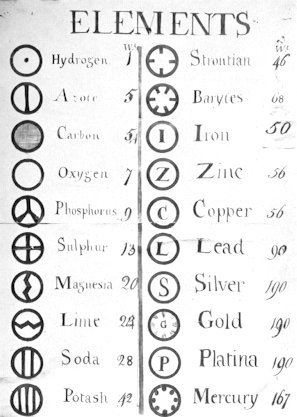
- If you examine the periodic tables from Antiquity to 1899, you will see that from about 1830 onwards, proto-periodic tables were coming thick and fast. Significant developments include: Daubeny's Teaching Display Board of Atomic Weights (1831), Chancourtois Telluric Helix (1862) and Newlands octaves (1864).
But, it was Mendeleev's Tabelle I that was first near complete periodic table formulation of the then known elements (no Group 18 rare gasses, note). Crucially, Mendeleev identified gaps and was able to make predictions about the chemical properties of the missing substances. Plus, Mendeleev promoted his ideas with great energy:
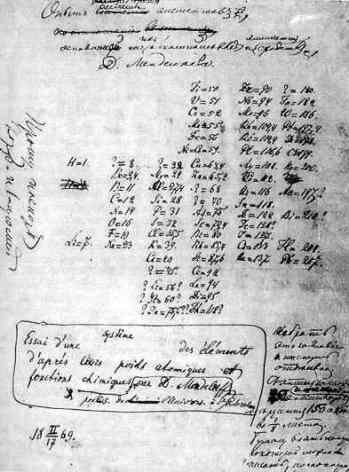
- Werner's 1905 Periodic Table is remarkably modern looking. The formulation is a long form that separates transition metals and rare earths, but he guessed wrong on how many existed:
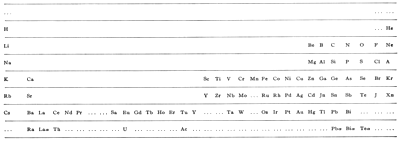
- Janet's Left Step formulation of 1928 is one for the purists as it clearly shows the chemical elements arranged into s, p, d & f-blocks of the recently developed quantum mechanical description of atomic structure:
- The modern (and commonly employed) periodic table is obtained by transforming Janet's Left Step into the modern long form periodic table by rearranging the blocks around. This transformational mapping is discussed in some detail here.
The long form and medium form PTs have electronegativity trending from top-right (electronegative) to bottom left (electropositive), and many aspects of periodicity corollate with electronegativity: atomic radius, first ionisation energy, etc.
Thus, the long form and medium form periodic tables are commonly used in the classroom:
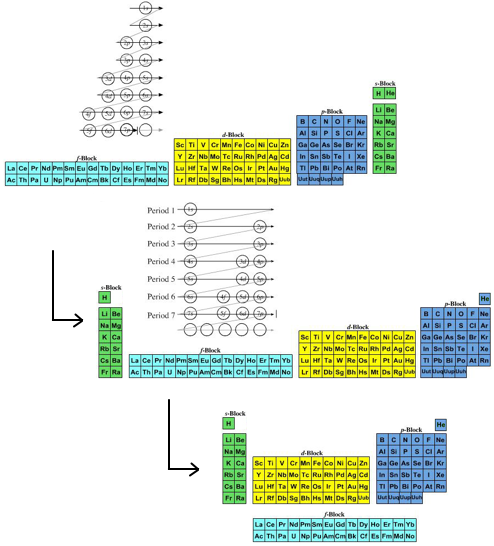
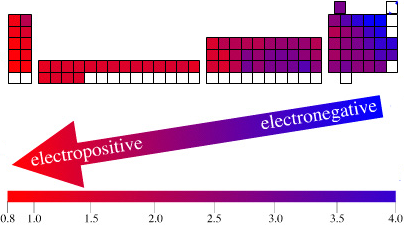
An Alternative Formulation
The internet database contains many, many alternative formulations, and these are often spiral and/or three dimensional. These exemplified by the 1965 Alexander DeskTopper Arrangement. To see the variety of formulations available, check out the Spiral & Helical and 3-Dimensional formulations in the database:
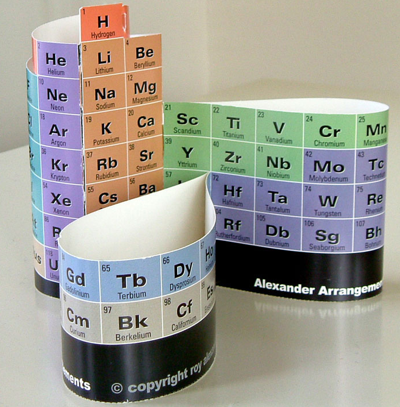
Non-Chemistry PTs
The periodic table as a motif is a useful and commonly used infographic template for arranging many types of object with, from 50 to 150 members.
There are numerous examples in the Non-Chemistry section where dozens of completely random representations can be found:
- Adobe Illustrator Shortcuts
- Adult Positions
- Airline Customer Reviews
- Beer Styles
- And, chosen more or less at random, European Nations:
| Year: 2013 | PT id = 611, Type = formulation misc |
Underground Map of the Elements
By Dr Mark Lorch of the University of Hull, an Underground Map of the Elements.
From here: "My son loves trains. So I came up with a train related twist to an inspection of the periodic table. We sat and cut up a copy of the table and then rearranged each element as a 'station' on an underground rail system. Each line represents a characteristic shared by the elements on that line":
Thanks to Eric Scerri for the tip!
See the website EricScerri.com and Eric's Twitter Feed.
| Year: 2013 | PT id = 612, Type = misc |
Don't Trust Atoms...
From Facebook... or buy the T-Shirt:
Thanks to Marcus Lynch for the tip!
| Year: 2013 | PT id = 613, Type = formulation |
Matrix Series Periodic Table
By Richard Kingstone, a Matrix Series Periodic Table. Read more here.
The Janet Periodic Table (aka Left Step Table) may be re-arranged as a series of square matrices. Each element is represented as a cell and is identified by the atomic number (Z), shown as the upper number of each cell.
The quantum numbers (n, l, mL, mS) determine the location of an element within the table. The quantum pair (n, l ) are the lower numbers in each cell. Four matrices are required, each matrix is identified by a 'matrix number' (a) as shown below;:
| Year: 2013 | PT id = 614, Type = formulation misc |
Music Notes of Periodic Table
By Claude Bayeh, a Musical Notes formulation:
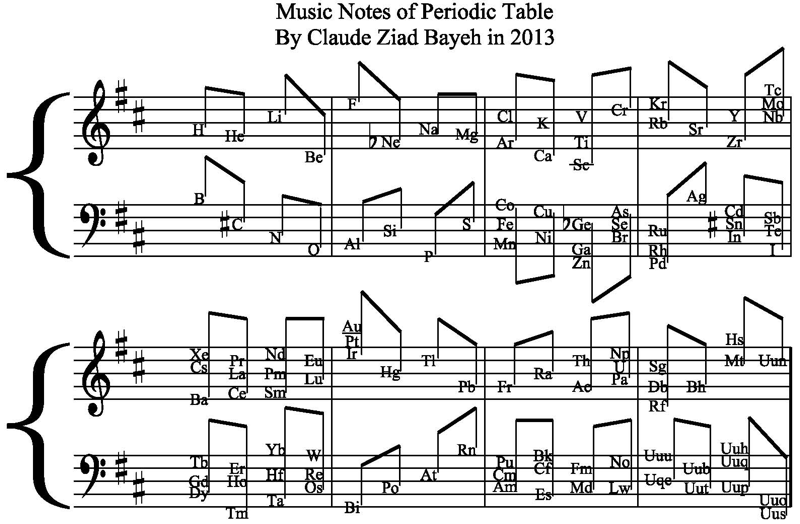
| Year: 2013 | PT id = 616, Type = misc |
Joke

Thanks to Marcus Lynch for the tip!
| Year: 2013 | PT id = 617, Type = misc |
Breaking Bad Periodic Table
The TV series Breaking Bad uses Br (35) and Ba (56) in the logo, and Beutler Ink have constructed a full periodic table or characters and 'additional elements':
| Year: 2013 | PT id = 618, Type = data |
Electronic Configuration Periodic Table
From the Encyclopedia of Metalloproteins, page 1407 published by Springer, 2013 (ISBN: 978-1-4614-1532-9) a periodic table of electronic configurations:

| Year: 2013 | PT id = 619, Type = data formulation |
Averaged Ionisation Potential Periodic Table
By Leland Allen, a representation of the periodic table with the third dimension of energy derived from the averaged ionisation potentials of the s and p electrons. (Allen suggested that this was a direct measure of electronegativity). From J. Am. Chem. Soc. 1989, 111, 9004:
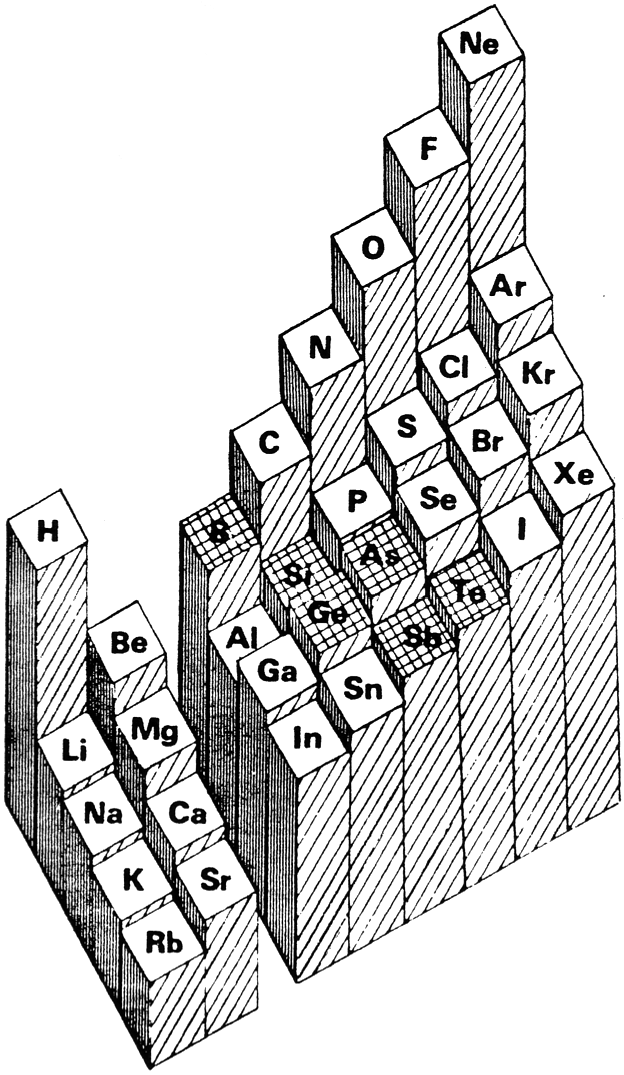
| Year: 2013 | PT id = 620, Type = formulation 3D |
Model Wooden Periodic Table
From here, and translated from Spanish:
Among the events commemorating the 75th anniversary of the creation of the School of Treball, the author of this site, B. Navarro, along with J. Semis and J. Gràcia have built a model wooden periodic table.
The table has been divided into 5 areas: representative elements, noble gases, transition elements, rare earths and finally the groups I and II of alkali and alkaline earth together. Each of these areas of the table is made with a different type of wood. The block transition elements is made with oak, ash noble gases, representative elements in cherry, sapele the rare earth and alkali/alcalinoterros beechwood.
The central idea of the model is that each element is represented by a cube of 3 cm edge so that you can see on all sides, from left to right or right to left without losing the order of increasing atomic number or the relative position of the elements:
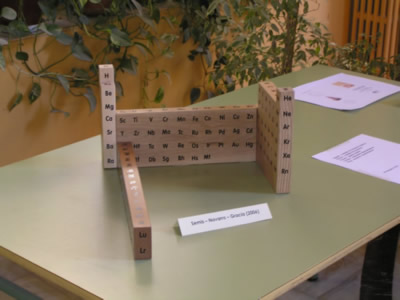
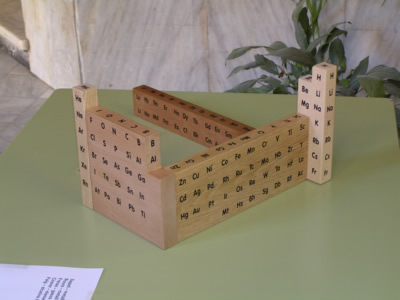
| Year: 2013 | PT id = 622, Type = formulation spiral |
Muradjan's Mathematical Structure of The Periodic Table
From the website periodictablemathstructure:
Abstract:
The Periodic Table with a new double numerical structure, presented here is attempt to find table form which will in some new way represent the periodicity and symmetry of the Elements, with the Periodic System as base. Also this tetrahedral laminar table structure maybe will became a base for developing a new shell structure of atomic nucleus. This new rearrangement of the chemical element is based on mathematical formula which result is simple, length of the periods:
| Year: 2013 | PT id = 629, Type = formulation 3D |
Atomic Periodic Town
Three related formulations by Baha Tangour (Tangour Bahoueddine), the Atomic Town and two Boomerang periodic tables.
Baha says: "The propositions are different representation of a 3D dimensions that depend on three properties (spectral term multiplicity, lone-pairs and period number)":
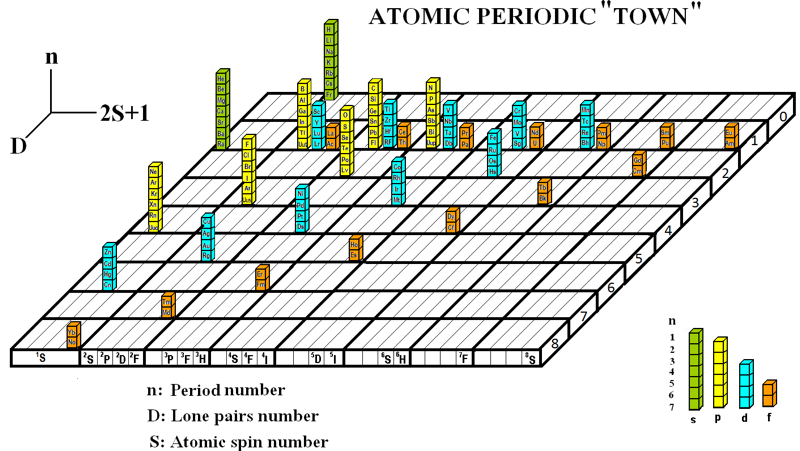
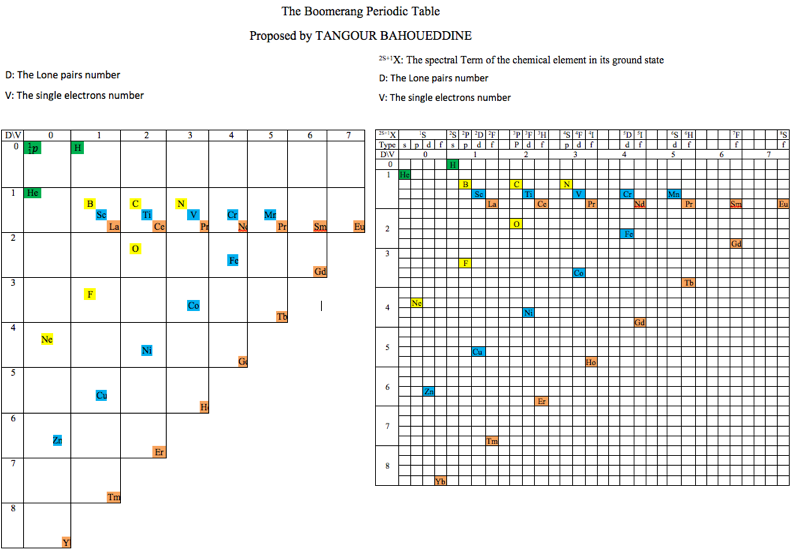
| Year: 2013 | PT id = 632, Type = misc data |
Spider Chart of The Periodic Table of Chemical Elements
A Spider Chart linking together various ideas about the Periodic Table of the Chemical Elements by Roy Alexander (of Alexander Arrangement fame).
Click here to embiggen the image:
| Year: 2013 | PT id = 647, Type = misc |
Stardust Periodic Table of The Elements
Inspired by Carl Sagan, Stardust Elements introduces a display case of the periodic table of the elements with real high purity samples:
| Year: 2013 | PT id = 688, Type = formulation |
Ye Olde Periodic Table
From the Serious Severity blog, a spoof of this formulation:
Thanks to Marcus Lynch for the tip!
| Year: 2013 | PT id = 970, Type = formulation |
Labarca & Zambon's Formulation
Labarca & Zambon's new representation of the periodic system.
A reconceptualization of the element concept as a basis for a new representation of the periodic system, Martín Labarca and Alfio Zambon, Educ. Quím., 24(1), 63-70, 2013.
"The aim of this paper is to propose a new conceptualization of the term 'element' as the basis for a new representation of the periodic system. For this purpose we begin by recalling the dual sense of the concept of element. Next, we develop the 'limits isotopes' argument which is the basis of the new periodic chart. This task leads us both to reconceptualize the notion of element and to characterize the term 'basic substance'. In turn, the argument is used to face the epistemological problem with hydrogen and helium in the periodic table. Finally, the Döbereiner's triads are used to calculate atomic masses in three periodic charts: the medium-long-form, the modified 'left-step' proposed by Scerri, and the proposed in this work. Evaluation results allows us to stand out the fruitful predictive power of our periodic system.
"The 46 blocks of elements are ordered vertically by the increasing number of neutrons of the lighter isotope (primary criterion) and, horizontally, by the increasing atomic number (secondary criterion). The subscript represents the value of L - Z and the superscript the value of Z."
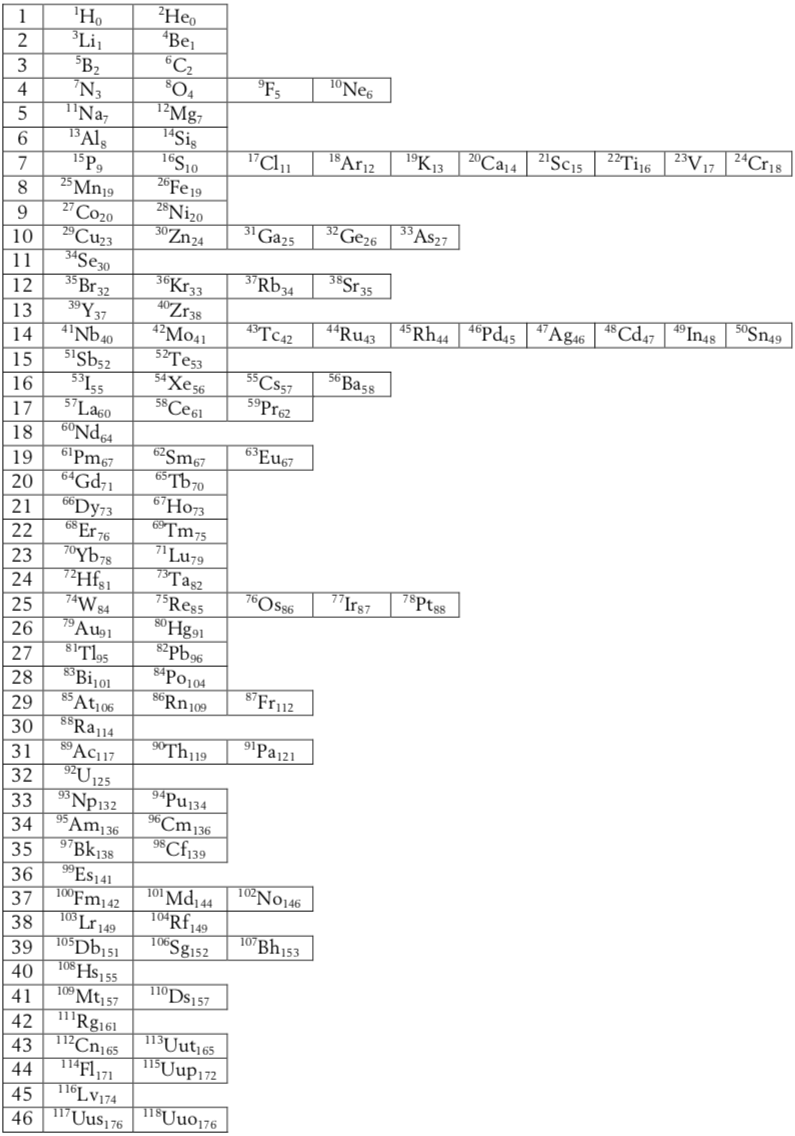
Thanks to Eric Scerri for the tip! See the website EricScerri.com and Eric's Twitter Feed.
| Year: 2013 | PT id = 1164, Type = formulation spiral 3D |
Periodic Pyramid
The Periodic Pyramid by Jennifer N. Hennigan and W. Tandy Grubbs, J. Chem. Educ. 2013, 90, 8, 1003-1008, https://doi.org/10.1021/ed3007567.
"The chemical elements present in the modern periodic table are arranged in terms of atomic numbers and chemical periodicity. Periodicity arises from quantum mechanical limitations on how many electrons can occupy various shells and subshells of an atom. The shell model of the atom predicts that a maximum of 2, 8, 18, and 32 electrons can occupy the shells identified by the principle quantum numbers n = 1, 2, 3, and 4, respectively.
The numbers 2, 8, 18, and 32 are shown in this work to be related to the triangular numbers from mathematical number theory. The relationship to the triangular numbers, in turn, suggests an alternate method for arranging elements in terms of periodicity. The resulting three-dimensional 'periodic pyramid' is highly symmetric in shape. Just as is true in the modern periodic table, each layer of the periodic pyramid can be separated into shell and subshell contributions. Examining the pyramid's structure is arguably a pedagogically useful activity for college-level introductory or physical chemistry students, as it provides an opportunity to further ponder the shell model of the atom and the origins of periodicity. The connections to number theory are used to show that the outermost subshell of a given shell contains (2n – 1) orbitals."
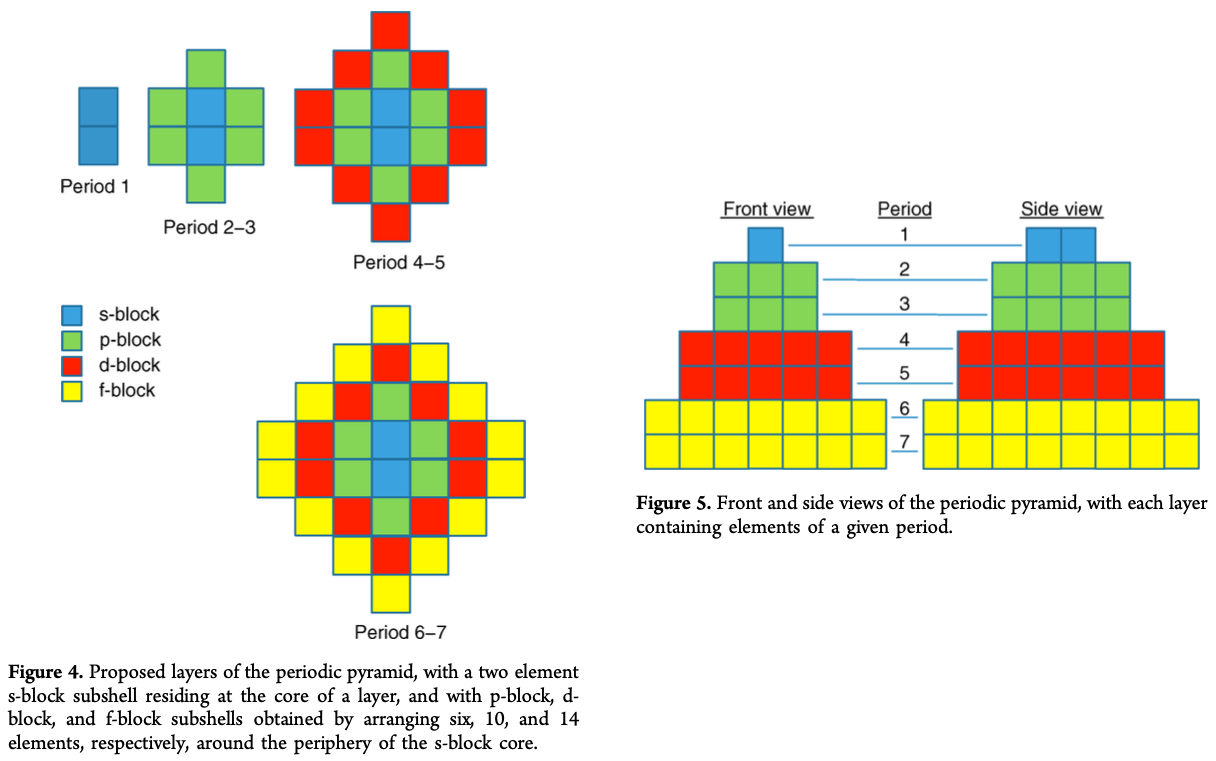
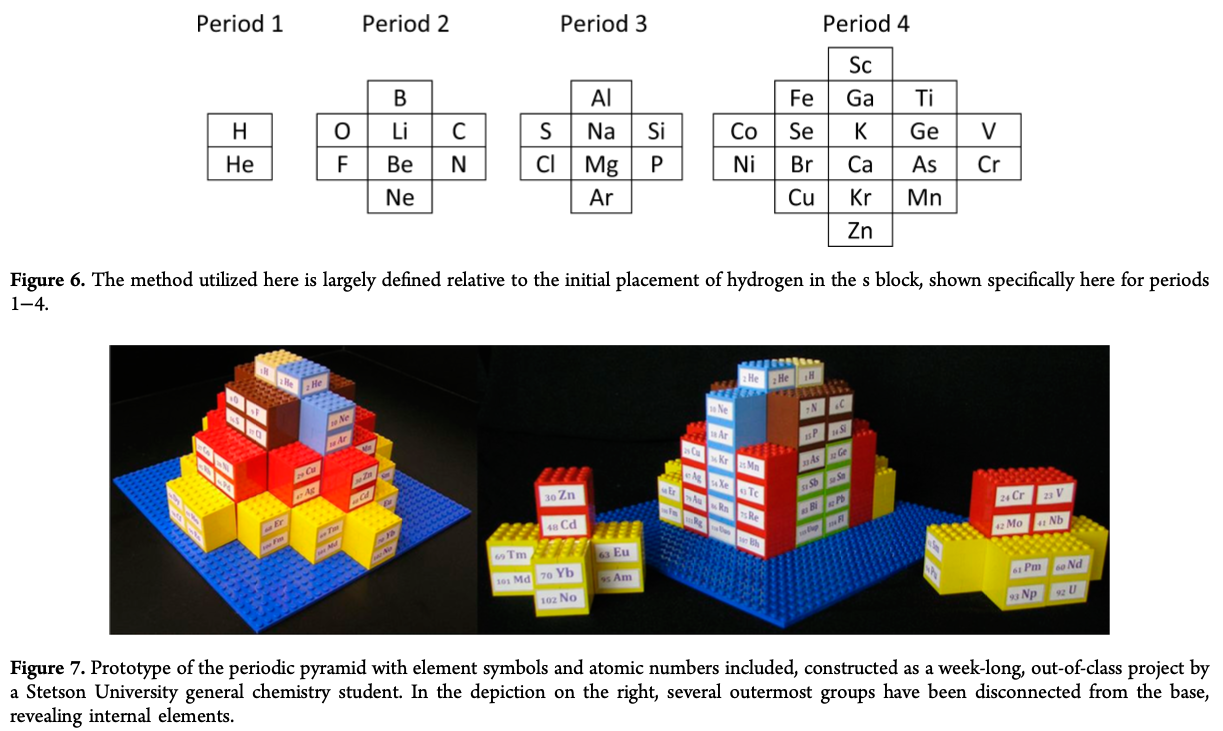
 |
 |
 |
| What is the Periodic Table Showing? | Periodicity |
© Mark R. Leach Ph.D. 1999 –
Queries, Suggestions, Bugs, Errors, Typos...
If you have any:
Queries
Comments
Suggestions
Suggestions for links
Bug, typo or grammatical error reports about this page,please contact Mark R. Leach, the author, using mark@meta-synthesis.com
This free, open access web book is an ongoing project and your input is appreciated.
